- Bihar Board

CFA Institute
Srm university.
- Rajasthan 10th Result
- Rajasthan Board Result
- Shiv Khera Special
- Education News
- Web Stories
- Current Affairs
- School & Boards
- College Admission
- Govt Jobs Alert & Prep
- GK & Aptitude
- School Life
Essay on World Nature Conservation Day in English for School Students
World nature conservation day 2023: students can find essays on world nature conservation day in 200 words and 500 words each. these essays can be used as a reference for essay competitions in schools..

schoolWorld Nature Conservation Day 2023 : World Nature Conservation Day is an important day of celebration in schools since it teaches students about the importance of conserving natural resources and nature as a whole. Schools organize various activities and competitions for students on this day, to make them aware of environmental hazards and ways of tackling them. Right from elementary school, activities like plantation programmes, cleanliness drives, saving environment campaigns such as poster making, essay writing, speech competitions, etc are organized by schools worldwide.
Essay on World Nature Conservation Day in 200 words
The world we live in is blessed with a plethora of natural flora and fauna. With the intervention of human lives, our natural processes get disrupted and deeply affected. Thus, the conservation of nature comes into play. Conservation refers to protecting the wasteful use of a resource. Human beings depend on nature for their survival. But, with rapid population growth and the overuse of these natural resources, conservation becomes an essential task. To celebrate nature and its importance, World Nature Conservation Day is celebrated on the 28th of July, every year.
History and origin of this day remains unclear till date. However, the reason for its celebration is something to remember. This day marks the importance of mother nature in our lives and informs people about how crucial its conservation is and how human lives have been affecting it. Every year, a theme is dedicated to its celebration. World Nature Conservation Day 2023 is themed as “Forests and Livelihoods: Sustaining People and Planet”.
Also Read - Chandrayaan 3 Essay in English for School Students
Essay on World Nature Conservation Day in 500 words
The world we live in is blessed with a plethora of natural flora and fauna. With the intervention of human lives, our natural processes get disrupted and deeply affected. Thus, the conservation of nature comes into play. Conservation refers to protecting the wasteful use of a resource. Human beings depend on nature for their survival. But, with rapid population growth and the overuse of these natural resources, conservation becomes an essential task. To celebrate nature and its importance, World Nature Conservation Day is celebrated on the 28th of July, every year.
History and origin of this day remains unclear till date. However, the reason for its celebration is something to remember. This day marks the importance of mother nature in our lives and informs people about how crucial its conservation is and how human lives have been affecting it. World Nature Conservation Day is a reminder of how our deadly practices disrupt the normal functioning of the earth and that it has to be interchanged with activities and habits that focus on preserving our natural resources. With the advancement of technology in our lives, there has been a significant increase in the problems with nature and the list almost never comes to an end. Some of the major environmental problems that have to be tackled with immediate effect are climate change, pollution, overpopulation, animal poaching, forest fires, deforestation, fast fashion, and many more.
Every year, a theme is dedicated to its celebration. World Nature Conservation Day 2023 is themed as “Forests and Livelihoods: Sustaining People and Planet”. As the name suggests, this year the focus is on spreading awareness about forest life and promoting sustainability to protect the planet and its people. The best way to celebrate this day is to indulge in environment conservation practices, taking a pledge about saving the environment from some deadly habits that every one of us performs and teaching people or spreading awareness about environment conservation ideas. Most of the time, people remain unaware of practices and the use of substances that might cause harm to nature. The first step in the conservation process should be about gaining knowledge and spreading it to the people, only then nature can be conserved.
Every one of us can work sensibly towards building a healthy environment by taking small steps towards environment conservation, in our everyday lives. Starting with avoiding the use of plastics, shopping sensibly, avoiding fast fashion, saving water and electricity, adhering to appropriate methods of dumping waste, and many more. Avoiding these regular practices can make a lot of difference in the health of nature. Every one of us must have heard this quote, “Health is Wealth”, but, our health depends on nature’s wealth and nature can be wealthy only if its people are conscious and responsible. As famously quoted by Mahatma Gandhi, “Earth provides enough to satisfy every man’s need, not every man’s greed”, let us all stop being greedy and involve in conscious use of all the beautiful gifts of nature. In order to change the world, it is important to change yourself. Every action begins at home. So, this World Nature Conservation Day let’s start taking environment-friendly actions and be that change we want to see in the world.
Get here latest School , CBSE and Govt Jobs notification in English and Hindi for Sarkari Naukari and Sarkari Result . Download the Jagran Josh Sarkari Naukri App . Check Board Result 2024 for Class 10 and Class 12 like CBSE Board Result , UP Board Result , Bihar Board Result , MP Board Result , Rajasthan Board Result and Other States Boards.
- RBSE 5th, 8th Result 2024
- RBSE Result 2024
- rajshaladarpan.nic.in 5th, 8th Result 2024
- rajshaladarpan.nic.in Result 2024
- Rajasthan Board Class 8th, 5th Result 2024 Roll Number
- RBSE Class 5th Result 2024 Roll Number
- Rajasthan 5th 8th Class Result 2024
- 8th, 5th Board Result 2024 Rajasthan
- RBSE 10th Result 2024
- UPSC CSE Admit Card 2024
Latest Education News
Lok Sabha Election Results 2024: Exit Polls Date and Time, Where to Watch Live Streaming
[रोल नंबर] Rajasthan Board Class 8th 5th Result 2024 Roll Number: 5वीं में 97.60% और 8वीं में 95.72% छात्र सफल, Marksheet यहां से करें डाउनलोड
T20 World Cup 2024 Commentators List: हिंदी कमेंट्री पैनल में शामिल है ये भारतीय दिग्गज, देखें पूरी सूची
भारत के कौन-से नेता मुख्यमंत्री या मंत्री रहे बिना सीधे बने प्रधानमंत्री?
DL New Rules 2024: RTO गए बिना ड्राइविंग टेस्ट कैसे करें पास? जानें यहां
ICC T20 World Cup 2024: T20 वर्ल्ड कप का शेड्यूल जारी, कब और किससे है India का Match देखें यहां
T20 World Cup 2024 Match Time in India: अमेरिका में मैच का है यह टाइम तो भारत में किस समय देखें
[नतीजे घोषित] RBSE Class 5th 8th Result 2024: 5वीं 8वीं के परिणाम जारी, rajshaladarpan.nic.in पर देखें Marksheet, निजी स्कूलों का बेहतर प्रदर्शन
Genius IQ Test: Find the value of the triangle in 11 seconds!
I Lost My Penny. Can You Spot The Lost Coin Hidden On The Floor Within 7 Seconds?
Academic Excellence, Flexibility and Diversity Make US A Top Destination Among International Students
Brain Teaser IQ Test: Find the mistake in the couple picture in 3 seconds!
Why RBI is Pulling Back 100 Tonnes of Gold from UK? Know What does this Mean
Revival of Dead: A possibility in future? A Cryogenic firm freezes its first client in hopes of reviving it in future
RSMSSB Hostel Superintendent Result 2024 OUT at rsmssb.rajasthan.gov.in: Download PDF Here
BPSC Head Teacher Salary 2024: Check In-Hand Pay, Structure, Perks and Allowances
RSMSSB Hostel Superintendent Result 2024 OUT: जारी हुआ हॉस्टल सुपरिन्टेन्डेन्ट परीक्षा का रिजल्ट, rsmssb.rajasthan.gov.in से करें डायरेक्ट डाउनलोड
IBPS RRB PO Syllabus 2024: PDF Download For Important Topics, Check Exam Pattern
HPPSC Lecturer Admit Card 2024 Out at hppsc.hp.gov.in: Check download link and exam date
JEE Advanced Response Sheet 2024 OUT: IIT JEE Advanced Response/OMR Candidate Sheets LINK ACTIVE at jeeadv.ac.in, Calculate your Scores
National Today
- Arts & Entertainment
- Food & Beverage
- Relationships
- Special Interest
Gift Guides
Got an idea for a holiday send it to us.

World Nature Conservation Day – July 28, 2024
World Nature Conservation Day is an annual event held on July 28. This day stresses the need for preserving a healthy environment and natural resources to maintain a stable and healthy society. Saving plants and animals that face the threat of extinction is one of the primary goals of World Nature Conservation Day. Also, the celebrations emphasize keeping the various components of nature such as flora, fauna, energy resources, soil, water, and air intact. In addition, World Nature Conservation Day underlines the need for preserving the environment for future generations. We are therefore tasked with the need to leave a healthy planet for those coming after us to enjoy.
History of World Nature Conservation Day
Human activities during the last century have had a devastating impact on natural vegetation and other resources. The quest for rapid industrialization and cutting down of forest cover to make space for the ever-growing population has caused climate change and other environmental implications.
As much as awareness about environmental conservation has increased in the past few years, there is still a long way to go before positive steps show their results. In recent times, the need for conserving the environment has become more evident. The relentless human overexploitation of resources has led to unusual weather patterns, destruction of wildlife habitats, extinction of species, and loss of biodiversity. Sadly, this is the norm the world over. That’s why organizations like the International Union for Conservation of Nature (I.U.C.N.) are important.
In the first decade of its existence, the organization focused on examining how human activities affected nature. It also promoted the use of environmental impact assessments, which have been widely adopted across industries. In the 1960s and 1970s, most of the I.U.C.N.’s work was directed toward the protection of species and their habitats. In 1964, the I.U.C.N. founded the I.U.C.N. Red List of Threatened Species™, which is currently the world’s most comprehensive data source on the risk of global extinction of species.
In the 2000s, the I.U.C.N. introduced ‘nature-based solutions.’ These are actions that conserve nature while also addressing global challenges such as climate change, security of food and water, and poverty alleviation. The I.U.C.N. is currently the world’s largest and most diverse environmental network.
World Nature Conservation Day timeline
The E.U. completely restricts the outdoor use of three neonicotinoids (a type of pesticide).
Thirty-one gray wolves from western Canada are released into Yellowstone National Park, 40 years after they were wiped out by people.
The Endangered Species Act is passed to encourage the conservation of ecosystems upon which threatened and endangered species rely for survival.
In Fontainebleau, a small town in France, the International Union for Conservation of Nature is established.
World Nature Conservation Day FAQ s
How many types of conservation are there.
Conservation is broadly divided into two types: in-situ (conservation of habitats, species, and ecosystems where they naturally occur) and ex-situ (conservation in the context of natural habitats e.g. through zoos, botanical gardens, and seed banks).
What is the difference between conservation and preservation?
Conservation promotes the sustainable use of nature by humans for activities such as logging, hunting, or mining, while preservation means protecting nature from human use.
Why is biodiversity important?
Biodiversity is vital for a flourishing natural world, as well as supporting economies, livelihoods, food security, and the health of humans.
Why is it important to conserve water?
Conserving water is important because it keeps water clean and pure while protecting the environment.
How to Observe World Nature Conservation Day
Cut down on plastic use.
Plastic is cheap and very convenient to use, but it comes with environmental implications. Plastic products are non-biodegradable and are an eyesore in our surroundings. Switch to products made of degradable and natural components instead.
Check e-waste
With the fast-changing pace of technology, people buy new electronic items without thinking about where the old products end up. Most of the e-waste produced is improperly disposed of. Aim to reduce your e-waste and look for recycling options before buying new products.
One of the biggest effects of climate change has been the decreasing level of safe drinking water. Simple steps like turning off water taps when not in use can save thousands of gallons of water in a year.
5 Facts About Conservation
Extinction is happening on a massive scale.
Around one million species of plants and animals are nearly extinct.
More reserves are needed
Only 12.5% of the landmass on Earth is dedicated to natural reserves.
Expensive invasive species
The U.K., the U.S., India, South Africa, Brazil, and Australia suffer an annual combined loss of $316 billion due to invasive species.
Wildlife population sizes have greatly declined
The W.W.F.’s Living Planet Report 2020 states that there has been an average 68% drop in the global population sizes of birds, amphibians, fish, mammals, and reptiles between 1970 and 2016.
Freshwater species are declining the fastest
Freshwater wildlife species populations are declining disproportionately faster than others, decreasing by an average of 84% between 1970 and 2018.
Why World Nature Conservation Day is Important
It reminds us to stay mindful.
Sometimes people become unconsciously reckless in their interactions with the environment. This day is a reminder to treat the Earth with respect.
It protects the environment
The natural world has suffered so much destruction at the hands of human beings. World Nature Conservation Day protects the environment from further harm.
It’s a chance to make a real impact
Conservation can sometimes feel like an abstract concept. This day helps us put things into perspective and make tangible positive changes.
World Nature Conservation Day dates
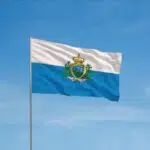
Holidays Straight to Your Inbox
Every day is a holiday! Receive fresh holidays directly to your inbox.
- 6,418 Days celebrated
- 19,254 Ways to celebrate
- 1,000,000+ Happy users
- Our Mission
- For Businesses
- For Journalists
- For Influencers
- Submit a Holiday
- Promote an Event
- Work With Us
- Submit an Error
Our Services
- Create A Holiday
- Sponsor A Holiday
- Data Licensing
- National Today Calendar
- Reviews and Gift Guides
Shopping Reviews
- Health & Fitness
- Home & Garden
- By Interest
- By Occasion
- By Recipient
Popular Holidays
- National Girlfriend Day
- Day of the Dead
- National Boyfriend Day
- National Sons Day
- Mexican Independence Day
- Pride Month
- National Best Friends Day
- National Daughter Day
- World Bicycle Day
- National Dog Day
About National Today
We keep track of fun holidays and special moments on the cultural calendar — giving you exciting activities, deals, local events, brand promotions, and other exciting ways to celebrate.
Follow us on

Essay on World Nature Conservation Day
On 28 July every year, World Nature Conservation Day is celebrated to mark the importance of nature and its conservation.
Can we imagine our life without air, water, trees, plants, or animals? Obviously, not at all. Every living organism is dependent on nature for its survival. We know that we should use everything within a limit. Overusing anything will always lead to destruction. The same goes for nature. If we keep nature healthy, it will give us healthy outcomes but if we pollute and overuse natural resources, the future has to suffer. To highlight the significance of nature, many conservation days are celebrated in the world. Let us discuss one of them.
Also Read : Essay on Wildlife Conservation
Short and Long World Nature Conservation Day Essay in English
Here, I’m providing long and short essays on World Nature Conservation Day with different word limits. This topic is useful for students of classes 1, 2, 3, 4, 5, 6, 7, 8, 9, 10, 11 and class 12. However, this topic is also important from the competition point of view.
World Nature Conservation Day Essay 10 Lines (100 – 150 Words)
1) 28 th of July is observed as World Nature Conservation Day all over the world.
2) This day highlights the importance of nature and its conservation.
3) This day also sheds light on threatened species of plants and animals.
4) On this day, many events are organized by conservation organizations.
5) Many schools organize events to mark the day.
6) To keep the world healthy by keeping nature healthy is essential.
7) This day holds a special significance for environmentalists.
8) It also promotes saving nature and its resources for the future.
9) On this day, many people take pledges to protect nature.
10) This day motivates people to conserve nature to lead a happy life.
Essay on Rainwater Harvesting
Short Essay on World Nature Conservation Day (200 – 250 Words)
Every year World Nature Conservation Day is celebrated around the globe on 28 July. The day aims to promote the importance of nature for humans. Many activities are performed to raise awareness among the general public. Events like seminars, plays, workshops, etc are organized by the concerned authorities. Many activities are also organized in schools to promote nature conservation. In many places, people plant trees and take oaths to save nature.
Nature includes everything from soil, air, water, trees, flora, fauna, etc. each resource helps in sustaining human survival. Today nature is suffering many difficulties like deforestation, global warming, pollution, etc due to which many changes occur in climate and rainfall. Also, there will be no resources left in the future if we continue to exploit them. In order to aware people of the importance of nature, World Nature Conservation Day is celebrated. This day also asks people to do their contribution in saving nature.
The purpose of this occasion is to recognize the importance of a healthy and well-functioning environment for the improvement of human productivity and stability. Aside from this, it emphasizes the importance of preserving the environment for future generations as well. This day also reflects light on the endangered community of flora and fauna. We can also celebrate World Nature Conservation Day by helping in saving nature.
Long Essay on World Nature Conservation Day (500 – 600 Words)
Introduction
We often call nature our mother but do we really treat her like a mother? We call nature a mother because all our necessities are well-fulfilled by her. Nature gives us many things without asking anything in return, just like a mother. Therefore, it is our duty to take care of her as our mother. But many people forget their responsibilities and duties towards nature and hence to remind them, World Nature Conservation Day is celebrated.
Objectives of World Nature Conservation Day
World Nature Conservation Day is celebrated globally every year on 28 th of July. Nature gives us many things, without nature and its resources life will be difficult for humans. Therefore, conserving nature is essential. The main objective of this observance is to aware people of the importance of preserving the environment and natural resources. Apart from nature, it is also important to maintain the integrity of nature’s components. A few examples include energy resources, flora, fauna, air, water, soil, etc. This day teaches people that a healthy life can only be achieved if we have a healthy environment. This day also focuses on saving endangered species of plants and animals.
What is the Need to Conserve Nature?
Nature gives us almost all the things that are required for a healthy living. A healthy and prosperous society can only be possible if we have a healthy nature. People are using nature and its resources in such a way that the future generation is going to suffer a great loss. Due to human activities like pollution, overusing of resources, extinction of flora and fauna, deforestation, water contamination, etc nature is suffering many problems. However, this will directly impact the living of human beings. Therefore, conserving and protecting nature and its resources is very important.
It will also affect the ecological balance of the environment. In order to maintain biodiversity, nature conservation is important. Every responsible citizen should practice sustainable living and make small changes in their everyday lives, such as how they shop, travel, eat, etc so that we don’t harm our mother Earth.
How World Nature Conservation Day is Celebrated?
World Nature Conservation Day was established by an environmentalist in order to protect the Earth’s natural resources. This day is promoted majorly by the ENVIS (Environmental Information System) center in New Delhi and is sponsored by the Ministry of Environment and Forest, the Department of Environment, and the Government of India.
This day is celebrated by many conservation organizations from all around the world. They organize many events like seminars, workshops, plays, etc. at different places. The workshops cover a wide range of topics related to natural resource conservation and aim to educate the general public about the subject. Schools also conduct many activities like poster making, debate competitions, etc to raise awareness among students at an early age. Anyone can be a part of the World Nature Conservation Day celebration by contributing their part to nature conservation.
Nature supports the existence of humans and other living organisms. Thinking of a good life without nature is near to impossible. “The world has enough for everyone’s needs but not everyone’s greed”, this saying from great freedom fighter Mahatma Gandhi has a deep meaning. We can satisfy our needs with the resources provided by the nature but if we are lean to satisfy our greed, nature will be exhausted. Therefore, we should take proper steps to save nature and our future.
I hope the above provided essay on World Nature Conservation Day will be helpful in understanding the importance of this day.
FAQs: Frequently Asked Questions on World Nature Conservation Day
Ans. Preservation protects the environment from harmful human activities while conservation refers to the responsible use of natural resources.
Ans. There is no information regarding the origin of World Nature Conservation Day but still, this day holds a special significance in the world.
Ans. A naturalist is a word for people who studies nature.
Ans. The first chief of the US Forest Service, Gifford Pinchot was entitled as the “father of conservation”.
Related Information:
Essay on Conservation of Water
Essay on Conservation of Natural Resources
Essay on Conservation of Environment
Related Posts
Essay on digital india, cashless india essay, essay on child is father of the man, essay on causes, effects and prevention of corona virus, essay on dr. sarvepalli radhakrishnan, durga puja essay, essay on summer vacation, essay on my plans for summer vacation, essay on holiday.
Essay On World Nature Conservation Day
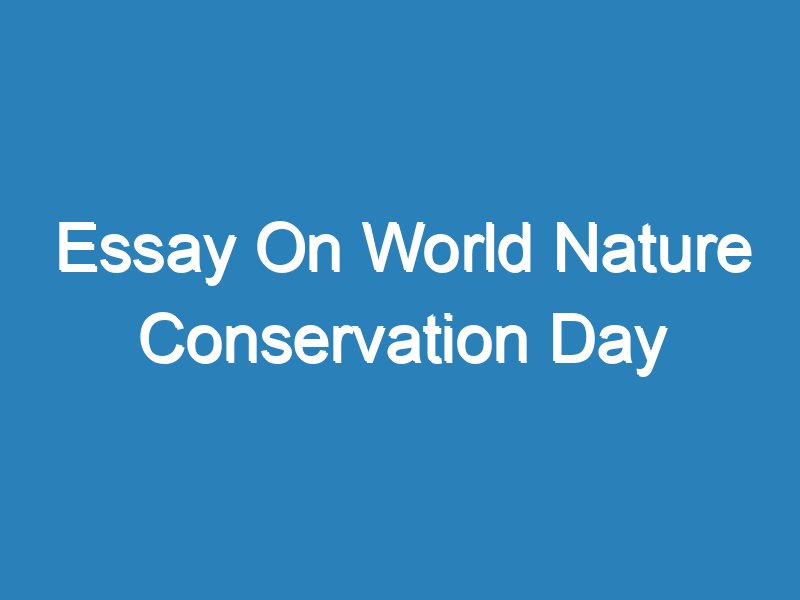
Table of Contents
Short Essay On World Nature Conservation Day
World Nature Conservation Day is celebrated on July 28th every year and is dedicated to promoting the importance of conserving our natural resources and preserving biodiversity. The day was established by the United Nations General Assembly in 1982 to raise awareness about the need to protect the world’s environment and the importance of preserving the natural resources that sustain life on Earth.
Nature is an essential component of our existence, providing us with air, water, food, and shelter. It is also the source of numerous ecosystem services, including pollination, soil formation, and climate regulation. However, human activities, such as deforestation, pollution, and climate change, are threatening the health and diversity of our planet’s ecosystems.
To celebrate World Nature Conservation Day, people from all over the world engage in activities that promote the conservation of nature. This can include planting trees, organizing clean-up events, or participating in educational activities that raise awareness about the importance of preserving our natural resources. Governments, organizations, and individuals are also encouraged to implement sustainable practices that help to conserve the planet’s resources and protect the environment.
One of the most effective ways to conserve nature is to reduce our carbon footprint. This can be done by reducing energy use, using alternative forms of transportation, and making more environmentally-friendly choices in our daily lives. Governments can also play a role in nature conservation by implementing policies that promote sustainable development, such as the Paris Agreement, and by investing in research and development to find alternative sources of energy.
In conclusion, World Nature Conservation Day is an important opportunity to raise awareness about the need to conserve our natural resources and protect the environment. It is an opportunity to take action and make changes in our daily lives that will help to preserve the natural world for future generations. Whether it is by reducing our carbon footprint, participating in environmental conservation activities, or supporting sustainable policies, we can all play a role in conserving nature and ensuring a healthy and diverse planet for future generations.
Long Essay On World Nature Conservation Day
Nature conservation is an important global cause, and World Nature Conservation Day on July 28th provides us with a chance to reflect on how we can each contribute to preserving the environment. In this article, we explore why nature conservation is so important and discuss some steps we can take to protect our planet. We’ll also look at some essay topics that could help you express your thoughts on World Nature Conservation Day.
Introduction
Today, May 22, is World Nature Conservation Day! This day is set aside to remind us of the importance of conserving our natural resources and protecting our planet. With the current state of the world’s environment, it is more important than ever to take action to preserve our planet for future generations. Here are some ways that you can celebrate World Nature Conservation Day and help make a difference:
1. Learn about the issues: Take some time to learn about the major environmental issues facing our planet today. This will help you be more informed about what you can do to help.
2. Spread the word: Once you have learned about the issues, spread the word to your friends and family. The more people who are aware of the problems, the more likely we are to find solutions.
3. Get involved: There are many ways to get involved in conserving our planet. You can start by reducing your own impact on the environment. Recycle, compost, reduce your energy consumption, and try to avoid using single-use plastics as much as possible. You can also get involved in local conservation efforts or donate to organizations working to protect our planet.
4. Be an advocate: Use your voice to speak up for our planet. Write letters to your elected officials or join an environmental group working on these issues. The more we stand up for our planet, the more likely we are to see change happen.
5. Teach others: One of the most important things you can do is to teach others about the importance of conserving our natural resources. Sharing your knowledge with others will help ensure that these issues remain top-of-mind for future generations.
By celebrating World Nature Conservation Day, we can all take action to protect our planet and leave a lasting legacy for future generations. Together, we can make a difference and create a brighter future!
What is World Nature Conservation Day?
World Nature Conservation Day is celebrated on July 28th every year to create awareness about the importance of conserving natural resources and to appreciate the efforts made by individuals, organizations, and governments around the world who are working towards this goal. This day also serves as a reminder that we all have a role to play in protecting our planet.
There are many ways to celebrate World Nature Conservation Day. One way is to educate others about the importance of conserving natural resources. This can be done through presentations, workshops, or simply by sharing information on social media. Another way to celebrate this day is to take action and get involved in conservation projects or initiatives. This could involve volunteering for a local clean-up project, planting trees, or supporting an environmental organization. Whatever you do, make sure you spread the word and help raise awareness about the importance of conserving our planet!
Why is it Important to Celebrate World Nature Conservation Day?
World Nature Conservation Day is celebrated on July 28th each year to increase awareness and encourage action to protect our natural world. The day was created in 1972 by the United Nations Conference on the Human Environment.
Humans are a part of nature, and we depend on healthy ecosystems for our survival. Unfortunately, human activity is causing unprecedented damage to the natural world. Climate change, habitat loss, pollution, and other environmental problems are putting our planet at risk.
World Nature Conservation Day is a reminder that we need to take care of our planet. We can all do our part to conserve resources and protect wildlife. By working together, we can make a difference for the future of our planet.
Benefits of Nature Conservation
Nature conservation is important for many reasons. Some of the most important reasons are that it helps to protect the environment and it helps to preserve the Earth’s resources. It is also beneficial to humans as it can help to improve our health and quality of life.
The environment is important to conserve as it provides us with all the resources we need to live. It also helps to regulate the climate and ecosystems, which provide us with food, water and oxygen. By conserving the environment, we are helping to ensure that these vital services are not disrupted.
Preserving the Earth’s resources is also crucial for future generations. We rely on these resources for our livelihoods, so it is essential that we use them sustainably. Nature conservation can help us to do this by ensuring that ecosystems are healthy and productive.
Finally, nature conservation can have a positive impact on our own health and wellbeing. Spending time in nature has been shown to reduce stress levels, improve mental health and boost immunity. So, by protecting the natural world, we are also protecting ourselves.
Different Ways to Celebrate This Day
There are many different ways that people can celebrate World Nature Conservation Day. Some people may choose to spend the day outside in nature, enjoying the beauty of the world around them. Others may choose to learn more about conservation efforts and what they can do to help protect the environment. Still others may choose to celebrate by participating in activities that help to conserve natural resources. No matter how you choose to celebrate, World Nature Conservation Day is a great opportunity to appreciate the world we live in and work together to protect it for future generations.
How Can I Make a Difference?
We all know that the world is in a state of change, some for the better and some for the worse. As we look around us, we see so many things that need to be improved upon or changed outright. It’s easy to feel overwhelmed and think that there’s nothing we can do to make a difference. But that’s not true! There are plenty of things we can do to make a positive impact on the world around us.
Here are just a few ideas:
1. Volunteer your time or donate money to a cause you care about. 2. Speak up when you see someone being treated unfairly. 3.Educate yourself and others about important issues facing our world today. 4. Stand up for what you believe in, even if it means going against the grain. 5. Be kind to others and show them compassion, even if they don’t deserve it.
These are just a few ways you can make a difference in the world around you! So don’t be discouraged – every little bit helps, and together we can make a big impact!
World Nature Conservation Day is an important reminder of the need to preserve and protect our natural environment. We must recognize that protecting nature not only benefits the environment but also ourselves, as it provides us with a unique opportunity to enjoy its beauty and abundance. By learning more about this day, we can all do our part in conserving nature and strive towards making Earth a better place for future generations.

Manisha Dubey Jha is a skilled educational content writer with 5 years of experience. Specializing in essays and paragraphs, she’s dedicated to crafting engaging and informative content that enriches learning experiences.
Related Posts
Essay on importance of yoga, essay on cow, climate change essay, essay on slaver, leave a comment cancel reply.
Your email address will not be published. Required fields are marked *
Save my name, email, and website in this browser for the next time I comment.
Talk to our experts
1800-120-456-456
- Conservation of Nature Essay

Essay on Conservation of Nature
Conservation of Nature is one of the most important essays writing topics for students of all classes. The need for conservation of nature and various measures for conservation of natural resources are included in the academic syllabus for almost all classes. Our subject matter experts at Vedantu have prepared an informative essay on the topic of Conservation of Nature, which will act as a guideline for the practice purpose of kids and students. The essay is written in an easy-to-understand manner, so as to help the kids to learn and remember the important points for writing this essay.
Essay 1: Nature is a blessing
Nature is the source of energy, source of light, source of oxygen, and in turn, source of life. We are nothing without nature and its components. With an increase in human growth and science, we tend to focus on everything but nature. Building bridges, cities, buildings are not only development but also a setback for nature because all we end up doing is cutting off trees, erasing the environment, and creating a ruckus for nature.
Nature has been providing us with everything, be it water, rain, sunlight, oxygen, shelter, or whatnot. In short, nature is the solution to almost all problems. All we need to do is prevent the human race from obliterating to further obliterate nature. The process of doing this is generally known as conservation. We need to conserve nature, we need to conserve life.
Conserving nature is one way of storing something fruitful for our future self, or the future generation. It is like investing money in a bank, which in turn lets you have more than what you invested eventually.
To conserve nature would be equal to conversing with the human race. We need to start thinking about it. It might seem like a small or negligent topic to talk about but honestly, nature is getting worse with every passing day and we have to start preserving it today.
There is not much needed to conserve nature. We don't have to give in our everything or leave other things to achieve this one goal, no. All we have to do is take small steps, every day. Small steps like trying to save even one ounce of water each day, or trying to plant at least one plant from your side, or trying to lessen air pollution from your side. Nature doesn't ask much from us.
To achieve this goal, we also need to know to have knowledge about a few other things such as our natural resources. Natural resources are classified into two groups, named, Renewable and Non-RenewableNon Renewable resources.
Renewable resources are those resources that can be recharged, such as solar panels, geothermal, and so on. On the other hand, Non-renewable petrol renewable resources are the ones that cannot be recharged such as fuels, patrol, and so on. We need to let renewable resources overpower non-renewable resources.
The other thing is being aware of the 3Rs technique, i.e., Reduce, Recycle, Reuse. If we pledge to follow these small rules and live by them, we can achieve a lot more than just nature's conservation.
With an increase in human growth and science, we tend to focus on everything but not nature. Nature is the source of energy, source of light, source of oxygen, and in turn, source of life. We are nothing without nature and its components. Humans are constantly Building bridges, cities, buildings are not only development but also a setback for nature because all we end up doing is cutting off trees, erasing the environment, and creating a ruckus for nature. When we do something to conserve and protect nature, nature will give tremendous benefits for the survival of human beings on Earth.
Essay 2: Conservation of Nature
‘In every walk in nature, one receives far more than he seeks.’ Nature is the best surprise gift received from God. Nature has blessed us with a variety of things like water, food, shelter, rain, sunlight, oxygen, and countless other things. These things assist humans in the betterment of their lives. Life is unpredictable and it's very difficult to tackle adverse situations, in such times nature is the solution to all the problems. Conservation is having a straightforward meaning of preservation and protection.
Conserving nature is just similar to adding or keeping cash in the pocket. Nature is the best friend of a human. Have you ever heard of naturotherapy techniques to cure the patient? Patients are advised to take or spend some time in the native place of animals. There they can keep themselves calm and comfortable so that they feel relaxed at the time of surgeries. Many of the medicines have their ingredients collected directly from the forest.
Have you ever thought about the amount of water we waste in a day? A great amount of water is wasted in our daily chores which could be helpful at the time of droughts. Also, keeping the water clean by not throwing any garbage in it, is the best way to conserve nature. Things made up of plastic should not be thrown off into water bodies as it never decomposes.
Natural resources can be classified into two categories which are renewable and nonrenewable. Renewable natural resources are those which can be replenished, like solar, wind, geothermal while on the other hand non-renewable are those which cannot be replenished easily over a short span of time. Non-renewable resources like fuels, petrol, and carbon are available in significant quantities. Renewable natural resources are available in good and significant quantities but their proper and effective use can vanish the utilization of non-renewable natural resources. Such as, electricity can be generated with the help of wind or water. Solar cars can reduce the use of petrol cars. This helps in keeping our earth an evergreen place to live. The conversion of one energy form into another is the best possible way to stop the consumption of non-renewable resources and to start making the best use of renewable energy.
Urbanization increases the rate of the population on concrete homes and decreases the reserves of natural utilities.
Nature has a lot to give, but there must be a proper way to store and reuse it. the 3R technique (Reduce, Recycle, and Reuse) proves the best method for conservation purposes. It states first try to reduce the use, or recycle the material or reuse it for other purposes. Many NGOs are spreading awareness among the people regarding this, but in the end, it's up to the self to take an initiative to make a change. As far as possible avoiding the use of non-renewable resources is the best possible way to maintain the reserves. Even keeping the water potable is a way of conservation. We have to start it someday, so why is that someday not today? Taking a step towards conserving nature is just like taking the step to success.
Final Thoughts
In your essay on Conservation of Nature, you should emphasize the need to conserve natural resources and the measures that can be taken for conservation. In the introduction paragraph, you may write about the gifts of nature and how nature actively supports the survival of living beings. For the body of your essay, you may write one or two paragraphs, stating the types of natural resources and how they are beneficial to humans. Also, write about the overuse of natural resources, leading to a faster rate of depletion than they can be replenished. In the concluding paragraph, write about the measures that can be taken to conserve natural resources. You can refer to the essay on this topic available on Vedantu to get a better idea.

FAQs on Conservation of Nature Essay
1. What are the main points to be written in an essay on the Conservation of Nature?
An essay on Conservation of Nature has to be informative and the points in it have to be relevant to most of the readers. The below-given questions will help you frame your essay on the Conservation of Nature.
What are the gifts of nature to living beings?
How does nature help us in rejuvenation?
What are the benefits drawn from natural resources, in our daily lives?
Is there any medicinal benefit that can be derived from nature?
How many types of natural resources are there? What are they?
How can we conserve renewable natural resources?
How can we save our nature from pollution?
What is the 3R technique?
2. How to write an essay on Conservation of Nature?
In your essay on Conservation of Nature you should emphasize the need to conserve natural resources and the measures that can be taken for conservation. In the introduction paragraph, you may write about the gifts of nature and how nature actively supports the survival of living beings. For the body of your essay, you may write one or two paragraphs, stating the types of natural resources and how they are beneficial to humans. Also, write about the overuse of natural resources, leading to a faster rate of depletion than they can be replenished. In the concluding paragraph, write about the measures that can be taken to conserve natural resources. You can refer to the essay on this topic available on Vedantu to get a better idea.
3. What is the 3R principle?
The 3R’s stand for ‘reduce’, ‘reuse’, and ‘recycle’, it is more often referred to as the three R’s of sustainability. The objective of these three R’s is conserving natural resources by cutting down their waste. Recycling and reusing manufacturing wastes and raw materials are meant to reduce the wastage of resources and the energy derived from these resources.
4. Is it important to write about the 3R principle in the essay on Conservation of Nature?
Yes, it is important to write about the 3R principle in your essay on the Conservation of Nature. It is one of the most effective measures to conserve natural resources and is being practiced all over the world. This will make your essay even more informative from the readers’ perspective.
5. Why is the conservation of nature necessary?
The conservation of nature is important because without nature there won’t be life possible on our planet. Nature gives us the necessary value to live our life. It provides us food to eat, eater to drink, and air to breathe. Nature has been providing us with everything, be it water, rain, sunlight, oxygen, shelter, or whatnot. In short, nature is the solution to almost all problems. Also, it provides us with a shelter to live in, and those valuable things that help us to live a good life.
World Nature Conservation Day: Date, Day, History, and Significance
World nature conservation day: the main purpose of celebrating world nature conservation day is to conserve the animals and trees that are on the verge of going extinct from the natural environment of the earth..

World Nature Conservation Day Images: It is celebrated on July 28 annually. (File)
World Nature Conservation Day acknowledges that a healthy environment is the foundation for a stable and healthy human society. It is celebrated on July 28 annually.
The main purpose of celebrating World Nature Conservation Day is to conserve the animals and trees that are on the verge of going extinct from the natural environment of the Earth.
Significance -
Conservation of resources has an important role in protecting our mother Earth. The balance in the natural beauty of the earth can be maintained by preserving various components of nature - water, air, soil, energy, vegetation, minerals, fauna, etc.
To quote renowned Russian writer Leo Tolstoy, " One of the first conditions of happiness is that the link between man and nature shall not be broken. "
World Nature Conservation Day recognizes that a healthy environment is the foundation for a stable and productive society and to ensure the well-being of present and future generations, we all must participate to protect, conserve, and sustainably manage our natural resources.
Promoted Listen to the latest songs, only on JioSaavn.com
The history and origin of World Nature Conservation Day is not known but the main aim of celebrating it on 28 July is to introspect as a species on how humans are exploiting nature and take steps to conserve it. Humans are facing the wrath of global warming, various diseases, natural disasters, increased temperature, etc, due to the overexploitation of natural resources.
In the words of Mohith Agadi, " Environment isn't asking us to conserve her for her but for our future generations. "
Track Budget 2023 and get Latest News Live on NDTV.com.
Track Latest News Live on NDTV.com and get news updates from India and around the world .
India Elections | Read Latest News on Lok Sabha Elections 2024 Live on NDTV.com . Get Election Schedule , information on candidates, in-depth ground reports and more - #ElectionsWithNDTV
Watch Live News:

International Day of Biodiversity
A result of the UN General Assembly recognizing a set of guidelines to protect biodiversity and take action on the activities that threaten it, International Day of Biodiversity is celebrated on May 22.
Biology, Ecology
Roosevelt Elk
A Roosevelt elk (Cervus elaphus roosevelti) bull in an old growth redwood forest.
Photograph by Michael Nichols, National Geographic
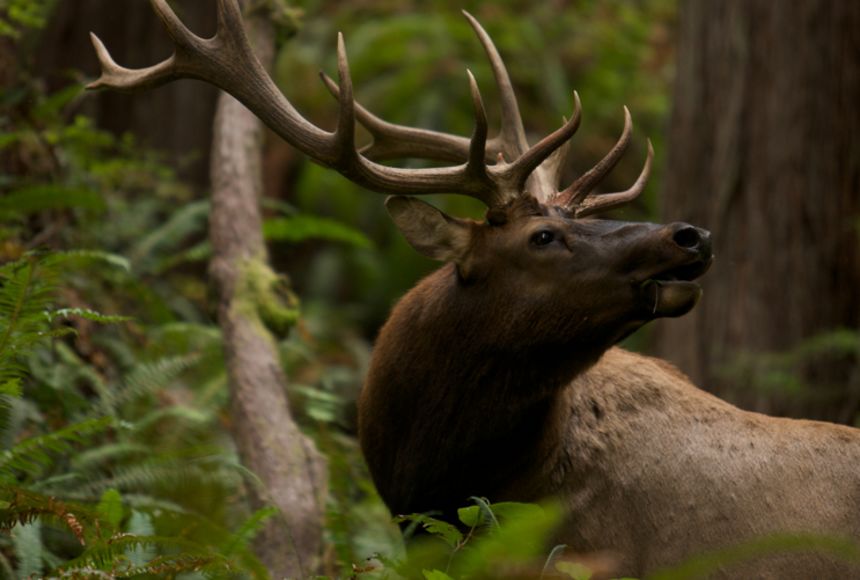
If variety is the spice of life, then biological diversity makes Earth’s ecosystems spicy indeed. Biodiversity is a complex yet growing topic of interest not only to scientists, but also to policymakers across the globe. First coined by Walter G. Rosen in 1985, biological diversity—or biodiversity, as it is more commonly called—is defined as the “variety of life on Earth and the natural patterns it forms.”
In 1988, the United Nations Environment Programme (UNEP) assembled the Ad Hoc Working Group of Experts on Biological Diversity to explore the need to form a Convention on biodiversity. After years of working to adopt a set of guidelines, the United Nations (UN) declared the Convention as “formally entered into force” on December 29, 1993. Today, this group is known as the Convention on Biological Diversity (CBD).
The CBD is an international treaty for the conservation of biodiversity, the sustainable use of the components of biodiversity and the equitable sharing of the benefits derived from the use of genetic resources.
With 196 Parties, the CBD has near universal participation among countries. The Convention seeks to address all threats to biodiversity and ecosystem services.
In 2000, the UN General Assembly officially proclaimed May 22 to be the International Day for Biodiversity (IDB). The date was chosen to celebrate the adoption of the initial text of the CBD, on May 22, 1992. Thanks to its efforts, the Convention has participants from nearly all countries. Many areas of the planet are now being conserved as part of protected areas and biodiversity hotspots. The Convention continues to address threats to biodiversity by producing scientific reports and developing tools to assist in conservation efforts. On May 22, 2018, the 25th anniversary of the IDB was celebrated by participating countries all over the world.
So just how diverse is Earth, and why is this important?
At present, nearly 2.16 million species of organisms have been identified on our planet. These species run the gamut from complex plants and animals to microbes and other simple organisms. Millions more species have yet to be discovered. Biodiversity matters because all organisms within an ecosystem are interconnected . As such, when the diversity of organisms within an ecosystem declines, so does the ecosystem’s ability to function and survive.
Though biodiversity generally increases slowly, it can decrease suddenly and dramatically. Scientists think the biodiversity currently observed on Earth is the result of evolutionary and natural processes that have occurred over billions of years. Yet biodiversity has continued to decline for the past 20 years, taking with it precious pieces of Earth’s rich history. According to a 2016 report released by the World Wildlife Fund, populations of vertebrate animals have declined by 58 percent between 1970 and 2012. Freshwater species have experienced an 81 percent decline in the same time span. While extinction is natural, human activities such as pollution , habitat destruction, and overharvesting of resources have added to the increase in extinction rates that impact biodiversity. UNEP’s Global Environment Outlook 4 recently stated that the species extinction rate is occurring at 100 times the natural rate. Scientists estimate that this acceleration will continue to a rate between 1,000 and 10,000 in the decades to come.
Numerous scientists have documented and called attention to this global loss of biodiversity. National Geographic Explorer Steve Boyes has devoted his life’s work to conservation efforts in Africa’s Okavango Delta. As stated by Boyes, “Wilderness cannot be restored or recreated, only destroyed. We are about to lose our last glimpses into pre-history.” Thanks to scientists such as Boyes, increased focus has been placed not only on measuring biodiversity but also on holding governments responsible for helping to conserve it.
So what specific efforts have been conducted to counter biodiversity loss?
The CBD is a legally binding global treaty focused on spreading public awareness about activities that threaten species diversity. The Convention also provides the framework by which participating governments establish their strategies to counteract species loss. The Convention seeks to address all threats to biodiversity and ecosystem services, including:
- threats from climate change, through scientific assessments,
- the development of tools, incentives and processes,
- the transfer of technologies and good practices, and
- the full and active involvement of relevant stakeholders including indigenous peoples and local communities, youth, women, NGOs, sub-national actors and the business community.
Milestones made by the CBD should be underscored for their far-reaching influence on nations across the globe. In 2022, the CBD adopted the Kunming-Montreal Global Biodiversity Framework outlining four long term goals for 2050 and 23 urgent targets to be achieved by 2030. The framework sets out an ambitious plan to implement broad based action to bring about a transformation in our societies’ relationship with biodiversity by 2030 and ensure that, by 2050, the shared vision of living in harmony with nature is fulfilled.
The CBD continues to work on implementing UN-sanctioned strategies globally. While there is still much work left to do, it’s important to remain hopeful that the UN vision will truly become a reality.
Media Credits
The audio, illustrations, photos, and videos are credited beneath the media asset, except for promotional images, which generally link to another page that contains the media credit. The Rights Holder for media is the person or group credited.
Production Managers
Program specialists, last updated.
March 11, 2024
User Permissions
For information on user permissions, please read our Terms of Service. If you have questions about how to cite anything on our website in your project or classroom presentation, please contact your teacher. They will best know the preferred format. When you reach out to them, you will need the page title, URL, and the date you accessed the resource.
If a media asset is downloadable, a download button appears in the corner of the media viewer. If no button appears, you cannot download or save the media.
Text on this page is printable and can be used according to our Terms of Service .
Interactives
Any interactives on this page can only be played while you are visiting our website. You cannot download interactives.
Related Resources

45,000+ students realised their study abroad dream with us. Take the first step today
Meet top uk universities from the comfort of your home, here’s your new year gift, one app for all your, study abroad needs, start your journey, track your progress, grow with the community and so much more.

Verification Code
An OTP has been sent to your registered mobile no. Please verify

Thanks for your comment !
Our team will review it before it's shown to our readers.

- School Education /
Essay on World Environment Day: 100, 200, and 300 words

- Updated on
- Nov 15, 2023

As we observe World Environment Day on 5th June each year, it is a reminder of the deteriorating environment and the urgent need to take effective measures. As inhabitants of the planet Earth, it is our responsibility to use resources wisely and take measures to reduce waste. In addition, it is our duty to plant trees and shift to non-renewable resources to reduce pollution and avoid natural calamities. Moreover, the day also reminds us to foster environmental consciousness and create a sustainable world for all. Thus, to put these thoughts into words, we have provided 3 samples for an essay on World Environment Day for your reference.
Table of Contents
- 1 Essay on World Environment Day: 100 words
- 2 Essay on World Environment Day: 200 words
- 3 Essay on World Environment Day: 300 words
Also Read: Essay on Environmental Pollution
Essay on World Environment Day: 100 words
Let us look at a 100-word essay on World Environment Day:
Also Read: NCERT Class 8 Geography Chapter 1 Resources
Essay on World Environment Day: 200 words
Further, we have a 200-word essay on World Environment Day for you:
Also Read: Scope and Importance of Environmental Science in School
Essay on World Environment Day: 300 words
Finally, let us view a 300-word essay on World Environment Day:
Ans: 5th June of each year is observed as the World or Global Environment Day.
Ans: The first Global Environment Day was celebrated on 5th June 1973.
Ans: It was instituted in 1972.
Ans: This day was instituted by the United Nations General Assembly (UNGA) at the Stockholm Conference on the Human Environment.
Related Posts
For more information on such interesting topics, visit our essay writing page and follow Leverage Edu.
Ankita Singh
Ankita is a history enthusiast with a few years of experience in academic writing. Her love for literature and history helps her curate engaging and informative content for education blog. When not writing, she finds peace in analysing historical and political anectodes.
Leave a Reply Cancel reply
Save my name, email, and website in this browser for the next time I comment.
Contact no. *

Connect With Us

45,000+ students realised their study abroad dream with us. Take the first step today.

Resend OTP in

Need help with?
Study abroad.
UK, Canada, US & More
IELTS, GRE, GMAT & More
Scholarship, Loans & Forex
Country Preference
New Zealand

Which English test are you planning to take?
Which academic test are you planning to take.
Not Sure yet
When are you planning to take the exam?
Already booked my exam slot
Within 2 Months
Want to learn about the test
Which Degree do you wish to pursue?
When do you want to start studying abroad.
January 2024
September 2024
What is your budget to study abroad?

How would you describe this article ?
Please rate this article
We would like to hear more.
Have something on your mind?

Make your study abroad dream a reality in January 2022 with
India's Biggest Virtual University Fair

Essex Direct Admission Day
Why attend .

Don't Miss Out

Search the United Nations
- UN Secretary-General
- UN Observances
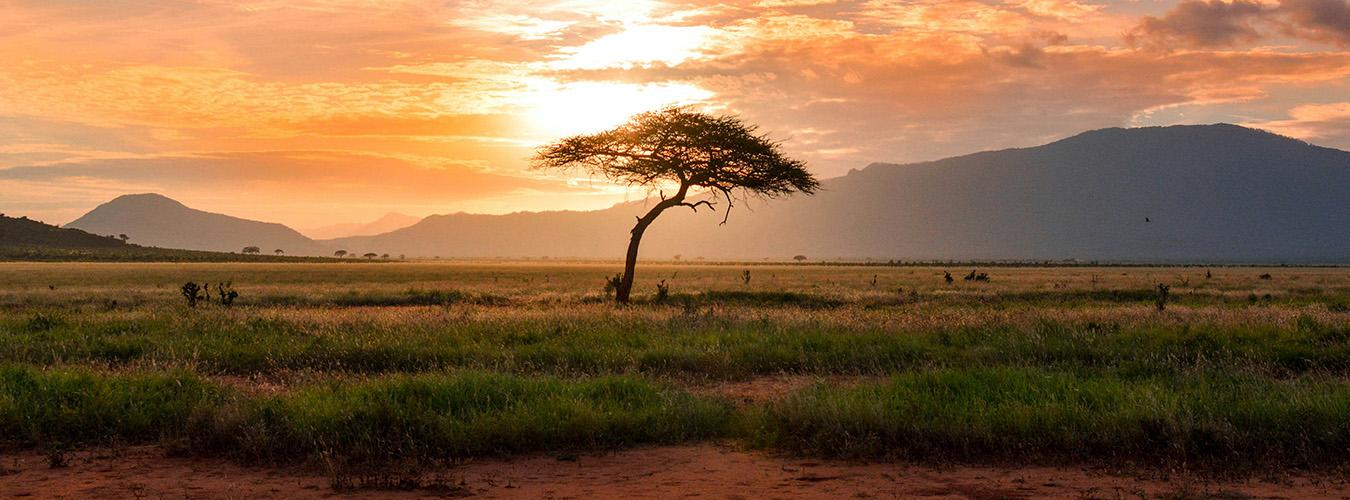
Our land. Our future.
All over the world, ecosystems are threatened. From forests and drylands to farmlands and lakes, natural spaces on which humanity’s existence depends are reaching a tipping point.
According to the UN Convention to Combat Desertification , up to 40 per cent of the planet’s land is degraded, directly affecting half of the world’s population. The number and duration of droughts has increased by 29 per cent since 2000 – without urgent action, droughts may affect over three-quarters of the world's population by 2050.
Land restoration is a key pillar of the UN Decade on Ecosystem Restoration (2021-2030), a rallying call for the protection and revival of ecosystems all around the world, which is critical to achieve the Sustainable Development Goals .
This is why World Environment Day 2024 focuses on land restoration, halting desertification and building drought resilience under the slogan “Our land. Our future. We are #GenerationRestoration.” We cannot turn back time, but we can grow forests, revive water sources, and bring back soils. We are the generation that can make peace with land.
2024 will mark the 30th anniversary of the UN Convention to Combat Desertification. The sixteenth session of the Conference of the Parties (COP 16) to the United Nations Convention to Combat Desertification (UNCCD) will be held in the Saudi capital, Riyadh, from 2 to 13 December 2024.

#OnlyOneEarth Practical Guide
UNEP has published a practical guide outlining some of the collective, transformative actions that governments, cities, businesses, organizations and individuals can take to protect and restore our planet.
What is World Environment Day?
Led by the United Nations Environment Programme (UNEP) and held annually on 5 June since 1973, World Environment Day is the largest global platform for environmental public outreach and is celebrated by millions of people across the world. In 2024, it is hosted by Saudi Arabia.
Why take part?
Time is running out, and nature is in emergency mode. To keep global warming below 1.5°C this century, we must halve annual greenhouse gas emissions by 2030. Without action, exposure to air pollution beyond safe guidelines will increase by 50 per cent within the decade and plastic waste flowing into aquatic ecosystems will nearly triple by 2040.
We need urgent action to address these pressing issues.
2020 has been referred to as a "Nature Super Year" and must be the year where we turn the tide on deforestation and forestry loss. Secretary-General's Message
Did you know?
- Every five seconds, the equivalent of one football pitch of soil is eroded. Yet, it takes 1,000 years to generate 3 centimeters of topsoil.
- Trees in urban areas can cool the air by up to 5°C, reducing air conditioning needs by 25 per cent.
- Lakes, rivers and wetlands hold 20–30 per cent of global carbon despite occupying only 5–8 per cent of its land surface.
Source: UNEP 2024
Get involved!

Live updates of hundreds of global activities
Tune in to the live updates of activities taking place around the world, featuring stories, events with high level speakers, report launches, social and videos.
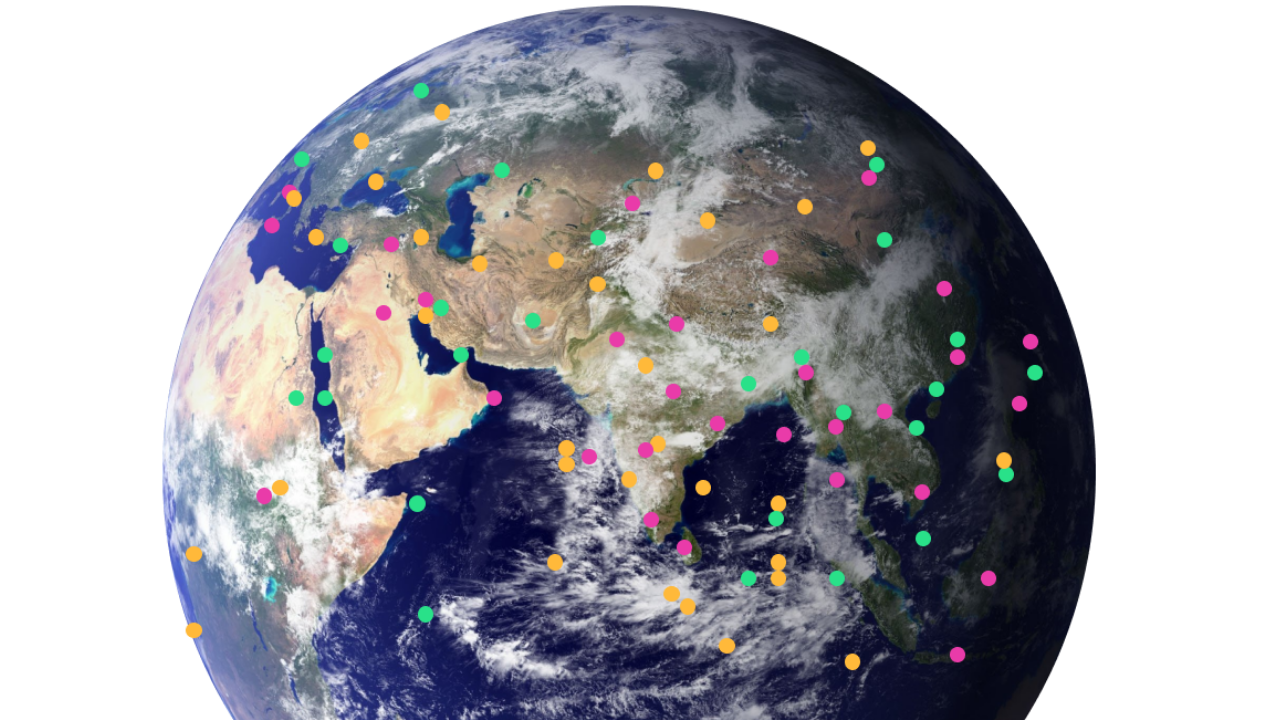
Quiz: How much do you know about degraded land, deserts and droughts?
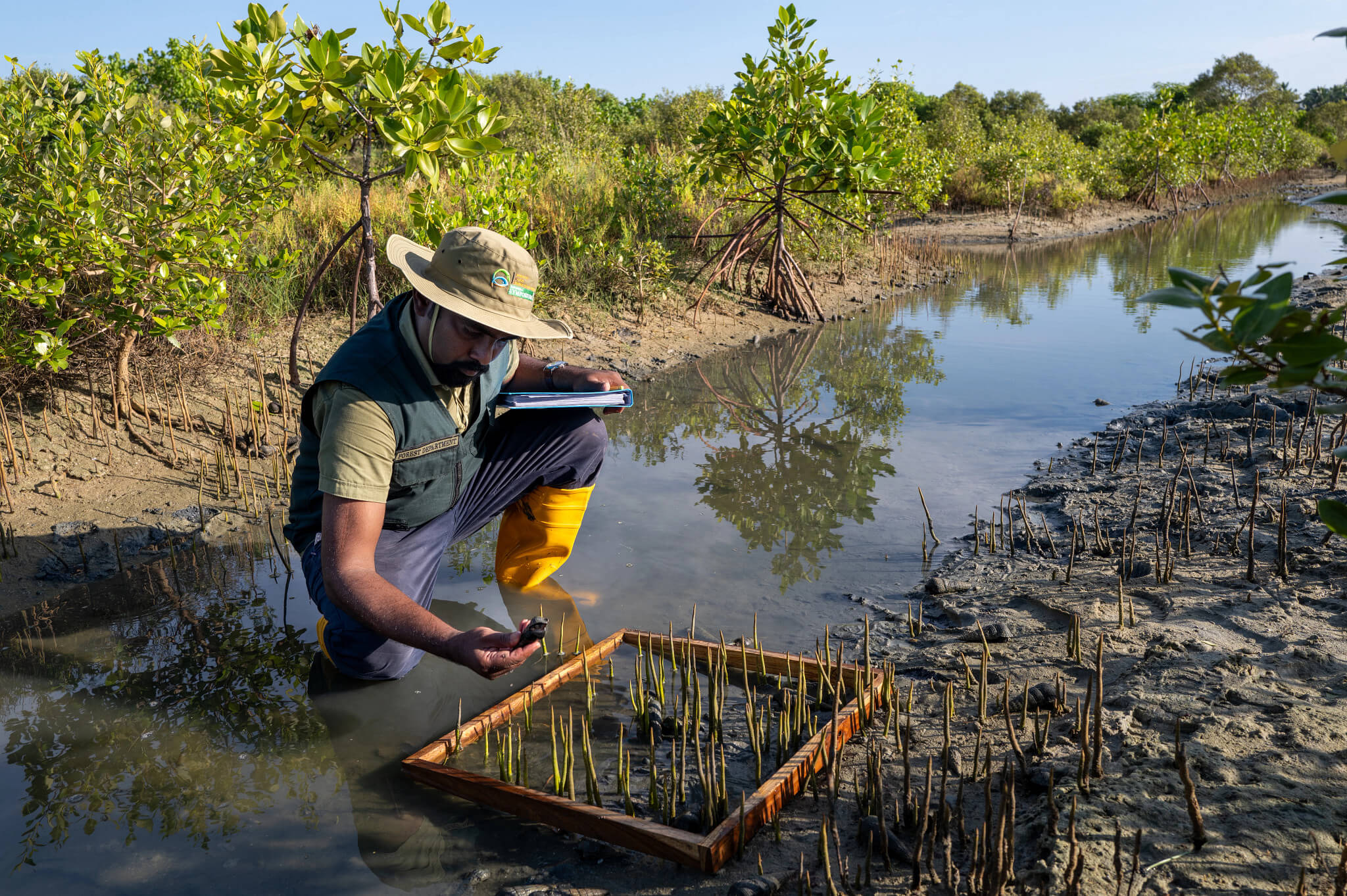
Faith in a global agreement to combat plastic pollution by 2024
Find out how much you know about the biggest crises facing our ecosystems. Test your knowledge here.
Related links
- UN Environment Programme
- Act now speak up
- Beat plastic pollution
- Breathe life challenge
- UN Decade on Ecosystem Restoration
- One Planet Network
- Cities with nature
- Sustainable finance
- Measuring progress on the SDGS
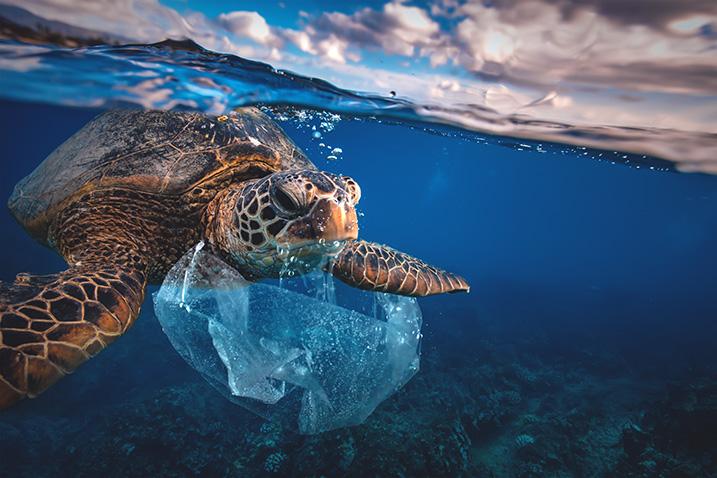
#GenerationRestoration
Join the #GenerationRestoration movement through the official website of World Environment Day 2023. You can access more interesting information, the actions you can carry out to contribute, as well as a large number of materials to promote the movement through social media. Every performance, no matter how small, matters.
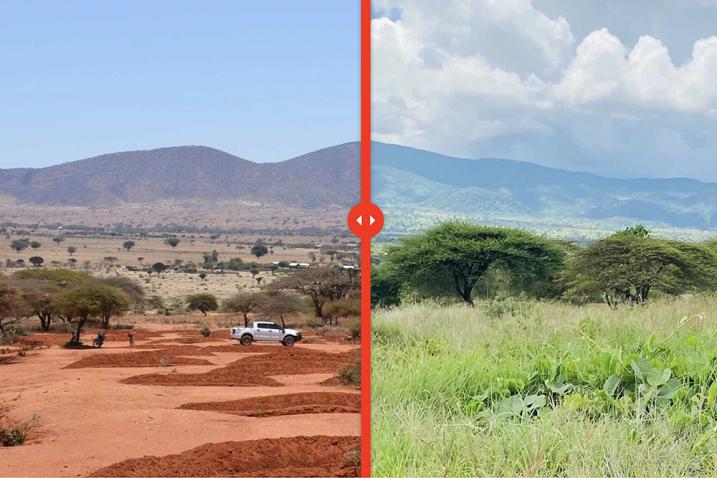
A practical guide to healing the planet
The UN Decade on Ecosystem Restoration focuses on eight major types of ecosystems that we have dangerously degraded. Each can be restored by reducing the pressures they face and with on-the-ground action to speed their recovery. Read all about the challenges and opportunities for each ecosystem in the scientific flagship report and the Ecosystem Restoration Playbook.
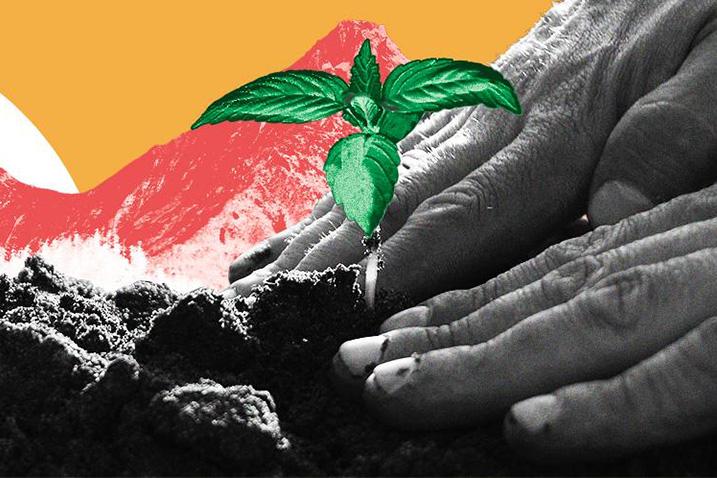
How does land degradation impact climate change?
Land plays a key role in the climate system as an essential carbon sink because its surfaces, such as forests, regulate the planet’s temperature and help to store carbon. But our land is under increasing pressure from deforestation, urbanization, industrial development, agricultural expansion and unsustainable farming practices. The good news is that there are ways to improve land degradation. Read more about climate change .
Energy Conservation Essay for Students and Children
500 words energy conservation essay.
Energy conservation refers to the efforts made to reduce the consumption of energy. The energy on Earth is not in unlimited supply. Furthermore, energy can take plenty of time to regenerate. This certainly makes it essential to conserve energy. Most noteworthy, energy conservation is achievable either by using energy more efficiently or by reducing the amount of service usage.

Importance of Energy Conservation
First of all, energy conservation plays an important role in saving non-renewable energy resources. Furthermore, non-renewable energy sources take many centuries to regenerate. Moreover, humans consume energy at a faster rate than it can be produced. Therefore, energy conservation would lead to the preservation of these precious non-renewable sources of energy.
Energy conservation will reduce the expenses related to fossil fuels. Fossil fuels are very expensive to mine. Therefore, consumers are required to pay higher prices for goods and services. Energy conservation would certainly reduce the amount of fossil fuel being mined. This, in turn, would reduce the costs of consumers.
Consequently, energy conservation would strengthen the economy as consumers will have more disposable income to spend on goods and services.
Energy conservation is good for scientific research. This is because; energy conservation gives researchers plenty of time to conduct researches.
Therefore, these researchers will have more time to come up with various energy solutions and alternatives. Humans must ensure to have fossil fuels as long as possible. This would give me enough time to finding practical solutions.
Get the huge list of more than 500 Essay Topics and Ideas
Another important reason for energy conservation is environmental protection. This is because various energy sources are significantly harmful to the environment. Furthermore, the burning of fossil fuels considerably pollutes the atmosphere. Moreover, nuclear energy creates dangerous nuclear waste. Hence, energy conservation will lead to environmental protection.
Energy conservation would also result in the good health of humans. Furthermore, the pollution released due to energy sources is harmful to the human body. The air pollution due to fossil fuels can cause various respiratory problems. Energy sources can pollute water which could cause several harmful diseases in humans. Nuclear waste can cause cancer and other deadly problems in the human body.
Measures to Conserve Energy
Energy taxation is a good measure from the government to conserve energy. Furthermore, several countries apply energy or a carbon tax on energy users. This tax would certainly put pressure on energy users to reduce their energy consumption. Moreover, carbon tax forces energy users to shift to other energy sources that are less harmful.
Building design plays a big role in energy conservation. An excellent way to conserve energy is by performing an energy audit in buildings. Energy audit refers to inspection and analysis of energy use in a building. Most noteworthy, the aim of the energy audit is to appropriately reduce energy input.
Another important way of energy conservation is by using energy-efficient products. Energy-efficient products are those that use lesser energy than their normal counterparts. One prominent example can be using an energy-efficient bulb rather than an incandescent light bulb.
In conclusion, energy conservation must be among the utmost priorities of humanity. Mahatma Gandhi was absolutely right when he said, “the earth provides enough to satisfy every man’s needs but not every man’s greed”. This statement pretty much sums up the importance of energy conservation. Immediate implementation of energy conservation measures is certainly of paramount importance.
FAQs on Energy Conservation
Q1 state one way in which energy conservation is important.
A1 One way in which energy conservation is important is that it leads to the preservation of fossil fuels.
Q2 Why energy taxation is a good measure to conserve energy?
A2 Energy taxation is certainly a good measure to conserve energy. This is because energy taxation puts financial pressure on energy users to reduce their energy consumption.
Customize your course in 30 seconds
Which class are you in.

- Travelling Essay
- Picnic Essay
- Our Country Essay
- My Parents Essay
- Essay on Favourite Personality
- Essay on Memorable Day of My Life
- Essay on Knowledge is Power
- Essay on Gurpurab
- Essay on My Favourite Season
- Essay on Types of Sports
Leave a Reply Cancel reply
Your email address will not be published. Required fields are marked *
Download the App


News Archives Read past news alerts
Read about Russian Conservation News Journals now available as PDF downloads here
Dear friends and colleagues: ( Read Russian Translation )
This weekend, our dear friend and colleague Laura Williams died in a horse riding accident at her home in Russia. It is a great shock and devastating loss for her family, friends, the WWF family, and a global community of conservationists, equine trainers, conservation photographers, fellow writers and readers of her work. Laura squeezed an amazing amount of life into her 49 years. She was an ardent advocate for conservation, a writer, a rider and horse trainer, an entrepreneur, a mother, daughter, sister, wife, good friend to many. She loved her boys and family and her husband Igor.
Laura, with her seemingly unflagging energy, fearlessness and skill in so many areas, must have hit the ground running when she was born. I met her in the early 1990’s, when she was in the process of establishing the first office for WWF in Russia. She, Eric Dinerstein and David Olson were compiling a compendium of information on Russia’s protected areas which would become the blueprint for WWF’s first decade in the country. Already by age 24, she was fluent in Russian and building a team for WWF in Moscow. Working with WWF offices in Europe and the US, Laura oversaw a major effort to get a desperately needed injection of funds into Russia’s zapovedniks, national parks, and endangered species protection.
About a year later, Laura – along with Eugene Simonov – became the co-director of a $20 million grant from World Bank to the Russian Federation – the first Global Environmental Facility (GEF) grant to the country for biodiversity conservation. At the time, I was also in Russia, mostly in the Russian Far East and Karelia, working in Kostomuksha Zapovednik. As our friendship grew, we called each other “sestra” (sister) because of our same last name and overlapping connections in Russian conservation. It would also turn out that we would share the same boss: Bill Eichbaum, who hired her to open the WWF office in 1993, became my mentor and hired me at WWF six years later.
Laura was not only a friend, but a creative sounding board and fellow strategist. She was the only other American I knew living in Russia interested in the protected natural areas of this daunting, fascinating and challenging place. Maybe it was not all that daunting to Laura, though. She managed to navigate the bureaucracies of Russian red tape and get money sent to various project sites across Russia – all at a time when the country’s financial system was in tatters, few people trusted the banking system and most individuals didn’t even have bank accounts. She organized field trips for WWF visitors, including one for Prince Philip to a Siberian nature reserve. She even drove a car in Moscow – that really impressed me!
During this period, she met Igor Shpilenok, founder and then-director of Bryansky Les Zapovednik (Nature Reserve). Igor’s vision to build a public education center at the edge of the nature reserve captivated WWF’s (and Laura’s) interest, and won the confidence and a grant from WWF. He was among the first of zapovednik directors to understand how to build a public constituency for the country’s protected areas, and Laura, having grown up with several national parks in her “back yard” in Colorado, fully understood the value of such work. Igor set to work immediately on the project and a year later, Laura attended the ribbon-cutting ceremony for a new, modern and beautiful educational visitor center in Suzemka village. Later that day, just as Laura was boarding the train back to Moscow, Igor invited her to return to Bryansky Les to become the director of the center.
Laura thought twice about leaving her job with WWF but not for long. She was called to the woods of Bryansk (and Igor may have had something to do with it) and decided to take Igor up on his offer. She loaded her clothes and two kittens into her little black Lada and drove 500 km south to Suzemka. After the big city life, settling into a simple log house with no running water or electricity must have been quite a change for Laura. And for the neighbors, too! The local babushki (elder women) found it fascinating to watch the young red-headed Amerikanka chopping her own wood for heat and carrying buckets of water on her own. The unusual appearance of this foreigner in these parts sparked a media frenzy and Laura’s story was broadcast nationwide: an American woman! living in such rustic conditions! by choice! But Laura kept focused on her work. Soon children’s programs were multiplying at the new center, local kids and adults were taking part in the Earth Day event March for Parks, and she was greeting a constant stream of visitors – rural school children, parents, regional officials, reporters – they were all welcome. Igor and Laura became a team in the field, and then in life. They fell madly in love with each other. Once when I was visiting them, Laura and I went for a long ride (she had at least two horses at that time) along the edge of the nature reserve. We came back at in the late afternoon. Igor was so happy to see her. “Let’s not ever be apart,” he said as he kissed her. It wasn’t long before they were married.
Together they finished building a house in the rural country village of Chukraie. Initially Igor had laid a small square foundation, but when Laura came along, the house took on new, creative proportions and formed the center of what is now a real homestead in the remote Russian countryside. Igor stepped down from being the director of Bryansky Les Nature Reserve, and transitioned to the position of ranger, so he could spend more time doing wildlife photography. The two began traveling frequently to other nature reserves, and produced a series of articles on the wildlife and wild places of Russia’s nature reserve system. Laura spent a year in the United States, where she attended the Yale School of Forestry for a Master’s Degree program, studying wildlife biology and taking up writing more intensively with our mutual friend and professor Fred Strebeigh.
As a new mother, first with Andrei and then Makar, Laura stayed a bit closer to home in Chukraie, but didn’t really slow down. She built a garden, kept chickens, milked Belka the goat, and cared for her horses Orlik and Aza. She continued writing for a web site about Russia’s protected areas ( www.wild-russia.org ) that we had created in 1999, and she occasionally wrote articles for Russian Conservation News. She wrote for the magazine Russian Life, International Wildlife, and supported Igor’s blossoming career in wildlife photography ( http://www.shpilenok.ru/galleryen/ ). She worked for WWF Russia on various projects, published a book, The Stork’s Nest, ( https://www.amazon.com/Storks-Nest-Life-Russian-Countryside/dp/1555916295 )
about her life in Chukraie, and then in 2005 moved – with two small boys and Igor in tow - to Kamchatka for a stint with the United Nations Development Program to run the UNDP salmon program there. Here Igor began his explorations of Kamchatka, documenting the geology, landscapes and animal life of this wild region.
In 2006, Laura returned to WWF. She helped us open an office in Kamchatka, the land of salmon, volcanoes, and brown bears. Laura earned a name for herself and WWF as staunch fighters on behalf wildlife, making it challenging for poachers to do their dirty business in certain parts of Kamchatka. The local authorities did not appreciate her earnest efforts, though, and tried their best to harass and intimidate her. In 2009, with her foundation of experience in Kamchatka, Laura then joined the staff at the Wild Salmon Center, based in Portland, OR. She took Andrei and Makar to the west coast for a year where they got their fill of English language and American culture. Igor kept busy back in Russia, spending more time in Kamchatka and preparing for his epic cross-country trip to document Russia’s nature reserve system in photography.
In more recent years, Laura was focusing on a new direction: equine therapy for children and adults alike. Having grown up riding in Colorado, she loved horses and started to add more of them to her animal family in Chukraie. As with all of the other projects she took on, Laura threw herself into the research and hard work needed to train her horses.
Last year she showed me some videos of her horses in action. In one scene, Laura is standing on a bench in the paddock, talking quietly to Daisy, an enormous, wide Percheron (“Budweiser horse”), standing several feet away. Laura instructs Daisy, who is wearing neither halter or saddle, to back up. Calmly, Daisy steps carefully backward until her huge body is parallel to the bench, now just inches away. Laura murmurs a thank-you to Daisy, and climbs onto the horse’s bare back.
In another video clip, a young girl with cerebral palsy is in the paddock, grooming one of the horses as it stands statue-still. Then she gets a chance to lead the horse on her own. Imagine the confidence-building boost for the girl! I wish I could recount with more detail some of the other scenes, such as the tiny autistic boy reading in the paddock as horses wander around him, or the team-building exercises Laura is leading for a group of adults. They are laughing and having fun; that was evident.
I loved and admired Laura, my American-Russian sestra. She had a unique mix of passion, humor, adventurous spirit, incredible competence and desire to do something good in the world for people and the planet. She had friends and colleagues around the world who recognized her creativity, commitment, intellect and depth. As much as one can write about such a person, words are never enough. In Laura’s memory, we can try our best to greet each day with intention, gratitude, and effort to make the world a better place.
Margaret Williams October 29, 2018
Read Russian Translation


International Day for the Conservation of the Mangrove Ecosystem
Mangroves are rare, spectacular and prolific ecosystems on the boundary between land and sea. These extra ordinary ecosystems contribute to the wellbeing, food security, and protection of coastal communities worldwide. They support a rich biodiversity and provide a valuable nursery habitat for fish and crustaceans. Mangroves also act as a form of natural coastal defense against storm surges, tsunamis, rising sea levels and erosion. Their soils are highly effective carbon sinks, sequestering vast amounts of carbon.
Yet mangroves are disappearing three to five times faster than overall global forest losses, with serious ecological and socio-economic impacts. Current estimates indicate that mangrove coverage has been divided by two in the past 40 years.
"Mangroves are in danger: it has been estimated that more than three quarters of mangroves in the world are now threatened and with them all the aquatic and terrestrial organisms that depend on them. This is why UNESCO has decided to act to protect them, along with other valuable blue carbon ecosystems, through its Geoparks, World Heritage sites and biosphere reserves."

Did you know ?
located at the interface of land and sea in tropical regions, which offer a considerable array of ecosystem goods and services.
Although they are found in 123 nations and territories, they represent less than 1% of all tropical forests worldwide, and less than 0.4% of the total global forest estate
They support complex communities, where thousands of other species interact. They provide a valuable nursery habitat for fish and crustaceans; a food source for monkeys, deer, birds, even kangaroos; and a source of nectar for honeybees.
Managing and restoring mangrove ecosystems is an achievable and cost effective way to help ensure food security for many coastal communities.
In these areas, UNESCO is committed to implementing science-based solutions in coordination with local and indigenous communities, to support humanity’s ability to cope with socio-ecological change.
sequestering vast amounts of carbon within the soil, leaves, branches, roots, etc.
it’s the equivalent of taking 2,650+ cars off the road for one year.
Experts estimate that carbon emissions from mangrove deforestation account for up to 10% of emissions from deforestation globally, despite covering just 0.7% of land coverage.
and increasing resilience to climate change impacts.
"We are working to protect mangroves and to better support scientific research into these environments. However, we cannot do this alone. We also need you."
UNESCO is engaged deeply in supporting the conservation of mangroves, while advancing the sustainable development of their local communities. The inclusion of mangroves in Biosphere Reserves , World Heritage sites and UNESCO Global Geoparks contributes to improving the knowledge, management and conservation of mangrove ecosystems throughout the world.
UNESCO is engaged at the scientific and policy levels to protect, manage or restore global blue carbon ecosystems (mangroves, seagrasses and tidal/salt marshes) for addressing climate change. Healthy blue carbon ecosystems also provide habitat for marine species, support fish stocks and food security, sustain coastal communities and livelihoods, filter water flowing into our oceans and reef systems, and protect coastlines from erosion and storm surges.
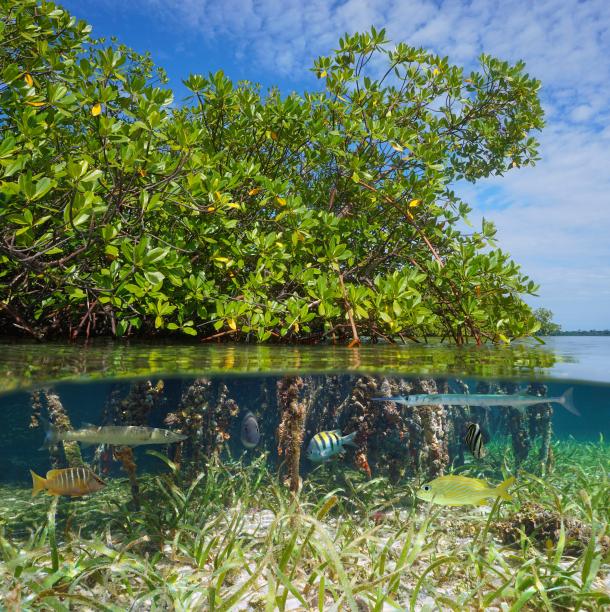
What UNESCO does for the conservation of the mangrove ecosystem

News and stories

Publications

- Plurilingual

WMO Statement on the State of the Global Climate in 2018

Canada - UNU-INWEH 2012

125 posters of mangroves around the world (2022)

Proclamation of the International Day for the Conservation of the Mangrove Ecosystem
The International Day for the Conservation of the Mangrove Ecosystem, adopted by the General Conference of UNESCO in 2015 and celebrated each year on 26 July, aims to raise awareness of the importance of mangrove ecosystems as "a unique, special and vulnerable ecosystem" and to promote solutions for their sustainable management, conservation and uses.
Programs submenu
Regions submenu, topics submenu, press briefing: previewing the g7 summit, strategic landpower dialogue: a conversation with gen james rainey, energy leadership conversation with wael sawan, securing medical supply chains – the role of transatlantic cooperation.
- Abshire-Inamori Leadership Academy
- Aerospace Security Project
- Africa Program
- Americas Program
- Arleigh A. Burke Chair in Strategy
- Asia Maritime Transparency Initiative
- Asia Program
- Australia Chair
- Brzezinski Chair in Global Security and Geostrategy
- Brzezinski Institute on Geostrategy
- Chair in U.S.-India Policy Studies
- China Power Project
- Chinese Business and Economics
- Defending Democratic Institutions
- Defense-Industrial Initiatives Group
- Defense 360
- Defense Budget Analysis
- Diversity and Leadership in International Affairs Project
- Economics Program
- Emeritus Chair in Strategy
- Energy Security and Climate Change Program
- Europe, Russia, and Eurasia Program
- Freeman Chair in China Studies
- Futures Lab
- Geoeconomic Council of Advisers
- Global Food and Water Security Program
- Global Health Policy Center
- Hess Center for New Frontiers
- Human Rights Initiative
- Humanitarian Agenda
- Intelligence, National Security, and Technology Program
- International Security Program
- Japan Chair
- Kissinger Chair
- Korea Chair
- Langone Chair in American Leadership
- Middle East Program
- Missile Defense Project
- Project on Critical Minerals Security
- Project on Fragility and Mobility
- Project on Nuclear Issues
- Project on Prosperity and Development
- Project on Trade and Technology
- Renewing American Innovation Project
- Scholl Chair in International Business
- Smart Women, Smart Power
- Southeast Asia Program
- Stephenson Ocean Security Project
- Strategic Technologies Program
- Transnational Threats Project
- Wadhwani Center for AI and Advanced Technologies
- All Regions
- Australia, New Zealand & Pacific
- Middle East
- Russia and Eurasia
- American Innovation
- Civic Education
- Climate Change
- Cybersecurity
- Defense Budget and Acquisition
- Defense and Security
- Energy and Sustainability
- Food Security
- Gender and International Security
- Geopolitics
- Global Health
- Human Rights
- Humanitarian Assistance
- Intelligence
- International Development
- Maritime Issues and Oceans
- Missile Defense
- Nuclear Issues
- Transnational Threats
- Water Security
Environmental Activism in Russia: Strategies and Prospects

Photo: OLGA MALTSEVA/AFP/Getty Images
Commentary by Angelina Davydova
Published March 3, 2021
Despite growing pressure on civil society activists and opposition leaders, grassroots environmental activism is on the rise in Russia. How have these movements evolved and adapted? What forms do they take now? And what is the future of environmental activism in Russia?
The last few years have witnessed growing environmental awareness across Russia’s regions, both according to polls and the number of observed protest movements and campaigns. (A good mapping of such protests can be found on crowd-sourcing platform Activatica .) These campaigns aim to tackle regional, local, or hyper-local problems and address a range of concerns: locally polluting enterprises, new and potentially hazardous factories and waste incinerators, the expansion of coal mines, a lack of access to trustworthy data about environmental pollution, the destruction of green spaces in urban areas, illegal logging, and the water pollution.
A number of factors contribute to this growing environmental awareness and activism. For one, the international “green” agenda has brought environmental concerns to the forefront of domestic political, societal, and media discussions. Research increasingly draws a link between high income levels and environmental awareness (even as the increased consumption of high earners raises their carbon footprint ). Although Russians’ real disposable incomes have mostly declined since 2014, the country’s GDP per capita has nearly doubled since 2000. Russians now find that it has become “normal” to care about environmental issues, demand access to environmental data, and worry about potential health hazards from environmental pollution. Indeed, 35 percent of Russians are ready to take part in environmental protests, according to a survey conducted by a number of sociological centers in the fall of 2020, with particular concern over industrial water pollution, illegal logging, illegal or mismanaged waste landfills, and urban water pollution. Another study from the Russian Public Opinion Research Center (VSIOM) published in August 2020 revealed one in four Russians has begun to think more about environmental issues during the pandemic due to overall increased attention to health. The Levada Center, an independent pollster, found that 84 percent of Russians are worried about environmental problems; of those, 25 percent expressed highest concern over air pollution, 15 percent over water pollution, and 11 percent over waste management.
This growth in environmental awareness in Russia has coincided with a growing concern that local natural resources—“our land” and “our forests”—are exploited or mismanaged by multinational or domestic companies, and that profits from these resources are whisked away to Moscow or foreign capitals to the detriment of local communities. In this sense, heightened environmental awareness intermingles with Russia’s traditional center-region cultural and political divide and growing regional inequalities .
The landscape for environmental activism in Russia is more fluid and decentralized than in the West—but it has grown. New environmental groups in Russia are informal and frequently do not register as nongovernmental organizations (NGOs). Rather, they spring up around a particular issue and often dissolve once it has been addressed, only occasionally evolving into a larger and more permanent association. Despite their informal structures, many of these new civil society groups have managed to attract impressive levels of public attention and support, aptly utilizing both traditional and new media and building up capacity and involvement structures through online tools. One example is the successful campaign around the Shies settlement in the Archangelsk region of northern Russia, where for months local activists have sustained an encampment to block the construction of a landfill for household waste from Moscow.
These grassroots movements and groups provoke a range of reactions from state authorities. Some are tolerated and even brought into the policy process (e.g., “officially” invited into advisory councils). Occasionally, these campaigns also lead to real change. Such was the case in Bashkiria, where recent protests over limestone mining in a hillside viewed by local residents as sacred led to the cancellation of the project .
More often, however, campaigns butt up against political realities, leading to the prosecution of activists and even physical threats and abuse toward to them by state institutions, often on behalf of a private company. A case in point would be persecution of activists from the Voronezh region for fighting against copper and nickel exploration plans on agricultural lands, even though these plans have been put on hold. A recent report by the Russian Socio-Ecological Union highlights 169 episodes of pressure on 450 eco-activists in 26 regions of Russia in 2020. One activist was killed, 15 were injured or had their property damaged, and 14 criminal and 264 administrative cases were initiated against eco-activists. “Most cases of pressure on eco-activists are connected with the extraction of natural resources, waste management, polluting industries and construction projects,” the report says.
Types of Activism
Environmental activism in Russia falls into several categories.
Protest groups
The first category tends to work mostly on short-lived campaigns directed against a local source of pollution (i.e., a factory or an incineration plant) or against plans to erect new infrastructure on an existing green space, particularly in urban areas. Participants in this category tend to be residents of the region or neighborhood who organize through social networks and then dissolve once their cause is addressed. Occasionally, these groups form networks or associations based on common interests and causes, such as the Green Coalition of St. Petersburg , which aims to unite all grassroots groups fighting against demolition of parks and green zones, or the Association of Eco-Groups of Moscow and Moscow Region
Grassroots environmental groups
The second type of group tends to focus on issues that are absent from the governmental agenda: recycling , sustainable or ethical consumption , urban greening , and more. An example here would be the movement Razdelny Sbor (“Separate Selection”), which created a system of recycling points across many Russian cities. These types of groups rarely engage in protest activities and tend to focus their energies and resources on lobbying and engaging the general public though traditional and social media.
Environmental watchdogs
The third genre of environmental activism in Russia focuses on public monitoring and oversight of environmental and urban policy at the federal, regional, and municipal level, including project implementation and public funds spending. Watchdogs might also provide alternate estimations of environmental data (especially when data is not available or reliable) or initiate campaigns for access to environmental data, demanding transparency and accountability. Examples here include grassroots initiatives to create alternative, civic-based monitoring of air pollution in Krasnoyarsk , Chelyabinsk , and Moscow .
Activists also use a variety of tactics to achieve their goals.
Social media and informational technology
Social media platforms, including VK, Facebook, WhatsApp, and increasingly Telegram, are the lifeblood of new environmental groups. They are used to report news and provide updates on activities and achievements, publish statistics, mobilize public support, and raise awareness over the campaign’s cause. A number of activists from environmental campaigns have also launched their own personal blogs, which act as self-run media sources offering personal takes on recent changes in legislation and synchronizing campaign updates and news. Anna Garkusha of Razdelny Sbor, for example, runs a popular blog on recycling and waste policy.
Another distinct feature of the new wave of environmental movements in Russia is the use of information technology and open-source data tools, including mapping, organized hackathons, and web platforms, apps, and other user-friendly interfaces that facilitate wider communication and greater involvement of the general public. Several environmental groups cooperate closely with experts or activists from the tech industry. An interesting example here is Teplitsa Sozialnykh Technologiy (“A Greenhouse for Social Technologies”), an NGO resource center that helps activist groups better use online technologies and digital tools and solutions in their work and campaigns.
Engagement with authorities
Although civil groups face growing pressure in Russia, there are plenty of examples of environmental NGOs and activists working through more formal channels to achieve their political aims. For example, Moscow’s annual Russian Civil Forum provides a space for representatives of established environmental NGOs and new environmental groups to try to coordinate with each other and align their positions on environmental policy issues. In addition, the Russian Social Ecological Union’s annual conference convenes representatives of Russian civil society groups (both registered and grassroots groups) working on energy efficiency and renewable energy issues to develop positions in support of or against international and Russian climate policy. These position points are later shared with Russian decisionmakers on climate change policy and with the international community at UN climate conferences. However, productive engagement with authorities is not always politically feasible—in particular when the object of protest concerns an investment project or a corruption scheme involving both local authorities and companies. Here, too, there are no set rules. Citizens may organize protest campaigns and attempt to attract the attention of regional or federal authorities via media and popular mobilization; go to the courts with the backing of professional lawyers, many of whom are also supported by NGOs such as Bellona or Greenpeace; enter into a dialogue with the local authorities via the civic chamber or similar structures; or combine these tactics to build pressure at multiple levels. In some cases, activists are persecuted by regional authorities and forced to leave the region (and even the country).
Regional authorities must walk a fine line between effectively managing environmental grievances and avoiding the heavy-handed persecution of activists or suppression of public opinion that could potentially damage their reputation. Indeed, a number of regional governors have lost their positions following large-scale environmental protests that they failed to tackle properly, at least in Moscow’s view. With this in mind, some governors are more willing to initiate dialogue with local activists just to avoid escalation.
Overall, the landscape for environmental activism in Russia is becoming more decentralized and less formal. A growing number of new groups and movements choose to remain unregistered entities—with no office, no full-time staff, and little or no budget—for a variety of political and societal reasons. First, repressive foreign agent legislation has raised the stakes for established NGOs who receive part of their financing from outside of Russia; increasingly, new environmental groups in Russia try to avoid any direct financing from abroad. Second, new groups try to preemptively avoid pressure from the authorities in the form of tax audits and health and fire code inspections that can lead to legal charges, fines, and even closure. Third, by skirting typical organizational or foundational structures, these groups can also claim to be closer to the ground and more connected to the immediate interests and concerns of local communities—working on local as opposed to global issues. More and more often, activism takes the form of crowdfunding campaigns or private donations only in an attempt to remain transparent to donors and accountable to constituencies.
Global movements
Even as activist structures have become more local and decentralized, youth climate activism in Russia has begun to gain steam over the past two years, in part due to the global “Fridays For Our Future” (FFF) and “Extinction Rebellion” movements. The first youth climate protest in Russia took place in March 2019, and FFF has existed in digital form throughout the pandemic, organizing online protests and forming policy positions.
Though part of a global movement, these youth groups have attempted to formulate a Russia-specific agenda and apply global climate rhetoric to local environmental campaigns. These groups combine the experience, expertise, and technologies of Russia’s environmental tradition—honed in fights against new coal and gas infrastructure and for accountability over oil spills and landfill mismanagement—and the language of the global youth, emphasizing unsustainable economic and social developments and calling for major policy reforms in the energy, waste, and transportation sectors. At times, however, these structural demands can sound too radical and unrealistic for some of Russia’s more established green groups.
Principles of Successful Activism
The past and current experiences of grassroots movements illustrate a framework for subsequent campaigns to follow. For an environmental activist movement to be successful in Russia, a number of factors must be in place:
- The campaign must be truly local, with limited foreign support (which would be described and promoted as “meddling” and lead to accusations of “foreign agent” involvement that might ruin the reputation of a campaign or its leaders).
- The cause must have widespread public support (including people eager and ready to invest their time and money into the cause).
- The cause must be supported by the expert community. Support from Russian Greenpeace and WWF Russia, as well as other expert centers, environmental lawyers, registered NGOs, think tanks, and scientists, can help to raise the problem to the federal level.
- There must be a professional media and social media campaign to build up a network of trusted supporters across the country.
- The campaign needs passionate and courageous leaders who are willing to dedicate their time and energy for a significant amount of time.
The Future of Environmental Activism in Russia
The development of environmental and climate activism in Russia is gradually changing the political and societal landscape. “Green” topics are gaining importance within the overall political agenda, both at the federal and regional level. As public awareness of environmental issues grows in Russia, companies are beginning to pay more attention as well. So far, most of these movements are concentrated around the local environmental agenda, but youth are bringing a more international outlook to the focus and methods of Russian environmental activism. In many ways, this activism lays the groundwork for a new and more engaged civil society in Russia, one that resists easy categorization but appears in many forms across Russia’s diverse regions.
Angelina Davydova is a visiting fellow with the Europe, Russia, and Eurasia Program at the Center for Strategic and International Studies in Washington, D.C.
Commentary is produced by the Center for Strategic and International Studies (CSIS), a private, tax-exempt institution focusing on international public policy issues. Its research is nonpartisan and nonproprietary. CSIS does not take specific policy positions. Accordingly, all views, positions, and conclusions expressed in this publication should be understood to be solely those of the author(s).
© 2021 by the Center for Strategic and International Studies. All rights reserved.
Angelina Davydova
Programs & projects.

- Visitor Centers & Exhibits
- Things to Do
- Get into Your Sanctuary Day
- Wildlife Viewing
- Latest News
- Press Releases
- Earth Is Blue
- Earth is Blue Magazine
- Stories from the Blue
- Notes From the Field
- Federal Register Notices
- Maritime Heritage
- Socioeconomics
- Small Boat Program
- Get Involved
- Photos & Videos
- Virtual Dives
- Sanctuaries Live
- Policy & Planning
- Publications
- Strategic Plan
- Work For Us
- Eight Ways to Support Marine Sanctuaries During National Ocean Month
By Chloe McKenna, Claire Cutler, and Kristi Ryono
As young women with a desire to protect our blue planet, we (Chloe, Claire, and Kristi) each joined NOAA’s Office of National Marine Sanctuaries education team while living on different coastlines of the country. Now, we work as a team sharing the importance of protecting the ocean with members of the next generation. As National Ocean Month approaches, we’re joining forces to share ways that other young people across the country can take action to protect national marine sanctuaries and be a voice for the ocean.
We know that the constant inundation of negative information about the current and future health of the planet is nothing short of overwhelming, especially for young people. When you look at the news or open social media, it is almost guaranteed that you will find dire news about the state of the planet. In this article, we challenge you to stay optimistic and motivated, and offer some positive actions you can take to support ocean conservation from anywhere. Our voices and actions—collectively and individually—are powerful.

The theme of this year’s World Ocean Day on June 8 is “Catalyzing Action for our Ocean and Climate.” Earth’s climate and the ocean are inextricably linked, and the health of each depends on the other. Throughout the month of June, young people across the globe are working together to advocate for a healthy ocean. Join us!
Here’s how you can support national marine sanctuaries and monuments during National Ocean Month:
1. increase your ocean and climate literacy:.
Understanding climate change and the threat that it poses to our ocean is a critical first step to advocating for and protecting our planet. The Seven Principles of Ocean Literacy help us understand our connection to the ocean, and are a great place to begin learning about the ocean.
Dig into activities and lessons in the Exploring Ocean Mysteries curriculum , a series of 17 lessons that use the National Marine Sanctuary System as an engaging backdrop that helps students understand their importance for exploration, research, Indigenous cultures and more. You can also learn about how blue carbon ecosystems, including ones found in your national marine sanctuaries, can help address climate change in the Blue Carbon Resource Collection .

NOAA’s Office of National Marine Sanctuaries has also created games, videos, and activities that allow you to explore your National Marine Sanctuary System no matter where you are. Take a virtual dive with green sea turtles in Hawaiian Islands Humpback Whale National Marine Sanctuary, or hear directly from a marine ecologist about what it took to pursue her career.
Check out more national marine sanctuaries educational resources for students .
2. Make your voice heard:
The National Marine Sanctuaries Act allows NOAA to identify, designate, and protect areas of the ocean and Great Lakes environment with special national significance due to their conservation, recreational, ecological, historical, scientific, cultural, archaeological, educational, or aesthetic qualities as national marine sanctuaries.
Currently, there are six designations in progress, and you have the opportunity to use your voice and take part in the public process. The following sites are in the designation stage:
- Chumash Heritage National Marine Sanctuary (California, USA)
- Hudson Canyon National Marine Sanctuary (New York and New Jersey, USA)
- Lake Erie Quadrangle National Marine Sanctuary (Pennsylvania, USA)
- Lake Ontario National Marine Sanctuary (New York, USA)
- Pacific Remote Islands Marine National Monument (Central Pacific, USA)
- Papahānaumokuākea National Marine Sanctuary (Hawai’i, USA)
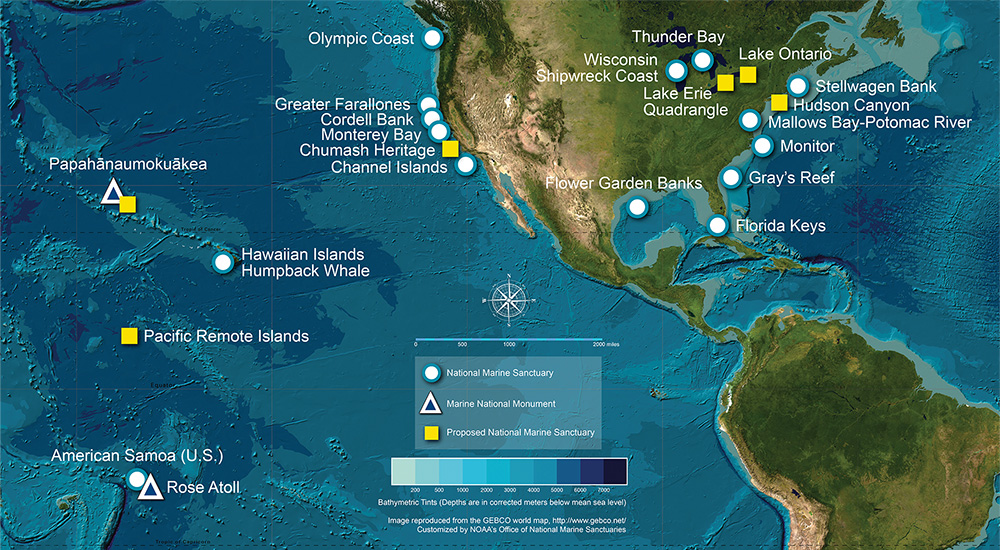
Hoku Kaʻaekuahiwi Pousima is the regional policy analyst for the Pacific Islands Region, and she is currently playing an important role in the public sanctuary designation processes taking place around Hawaii and the Central Pacific. According to Hoku, public participation is a critical step to receive input on potential boundaries, resource protection issues, and cultural considerations pertaining to the sanctuary.
NOAA invites people of all ages and backgrounds to come together to weigh in on sanctuary designations.
“I would love to see the youth in our community be more involved in decisions being made for our places and our resources,” says Hoku. “I believe one of the main reasons I am effective in my role with NOAA is because I am a community member. It's important to have folks in the agency who walk and talk like our communities, think like our communities, and look like our communities. This is really critical in place-based management because we are raising the next generation of stewards and inspiring youth to see themselves in these roles.”
Whether you live in a sanctuary community or care about a special place from afar, you can be part of this public process this National Ocean Month. Learn more about upcoming public comment periods where you can make your voice heard about potential new sanctuary sites.
3. Attend Capitol Hill Ocean Week (June 4-6):
Capitol Hill Ocean Week (CHOW) is the nation’s premier ocean and Great Lakes policy conference that convenes policymakers, scientists, managers, business leaders, conservationists, educators, students, and members of the public to engage in dialogue and debate on significant issues that impact our ocean and Great Lakes and to propose innovative policies and partnerships to address these issues.
The theme this year is ocean leadership , and the annual event hosted by the National Marine Sanctuary Foundation calls upon leaders from all walks of life to come together to drive attention and innovation to protect our ocean and center people at the core of ocean solutions. People of all ages across the nation are invited to attend the free event and be a part of the conversation.
4. Spread ocean optimism:
Maintaining optimism about the future of our ocean and our climate is essential to building a generation of informed ocean ambassadors. This month, share what you love about national marine sanctuaries with #OceanMonthNOAA . Let others know: Why does the ocean matter to you? Why are our national marine sanctuaries so important? What does protecting the ocean mean to you?

For over 50 years, the National Marine Sanctuary System has been celebrating and protecting some of our ocean’s most unique ecosystems and locations.
National marine sanctuaries and monuments are protected marine areas that include important and unique habitats, cultural resources, and geologic features. They are living laboratories where scientists conduct groundbreaking research that will help endangered wildlife and inform our response to climate change . Sanctuaries also protect areas for habitat restoration projects of critical ecosystems, including blue carbon ecosystems that can help address climate change.
These special places are also natural classrooms that students and teachers can explore and learn about together, and allow people across the country to experience and enjoy our ocean . National marine sanctuaries help us play outside, learn about marine life, admire the beauty of nature, and breathe fresh air .

5. Visit a national marine sanctuary:
National marine sanctuaries offer a unique opportunity to explore America’s underwater parks while building a connection to these special ocean places. From whale watching in Stellwagen Bank to scuba diving in the Florida Keys or paddle boarding in Thunder Bay National Marine Sanctuary, there are endless opportunities to explore these sites. Exploring responsibly is essential for both the safety and wellbeing of visitors and wildlife. Please adhere to the Wildlife Viewing Guidelines while visiting a national marine sanctuary.

Although we recommend visiting a national marine sanctuary in person, you can still experience everything it has to offer without getting wet! Sanctuaries 360° offers an immersive virtual reality experience so you can explore the underwater world from the comfort of your own home.
If you do visit a national marine sanctuary or marine national monument this year, be sure to capture your experience and share with us! From May 24, 2024 to September 2, 2024, the annual Get Into Your Sanctuary Photo Contest allows you to share what the ocean and Great Lakes mean to you. View the winning photos of last year’s and previous photo contests .
6. Take part in a community science project:
You can take part in a community science project that will help scientists at NOAA collect essential information. Sometimes referred to as “citizen science,” community science is a type of crowdsourcing, in which community members collect data that researchers can then use to answer big questions. Community science opportunities exist across many NOAA offices, including the Office of National Marine Sanctuaries! You can get involved with community science at NOAA by tracking sightings of marine debris, reporting your local water levels, or sharing your sightings of marine life!

Here at NOAA’s Office of National Marine Sanctuaries, we rely on the help of volunteers through community science projects throughout the year. Check out this list of sanctuary citizen science projects and see if there are any taking place near you! Depending on where you live, you could help with submerged aquatic vegetation surveys at Mallows Bay-Potomac River National Marine Sanctuary, or support seabird research and monitoring at Stellwagen Bank National Marine Sanctuary. There are even opportunities to participate in citizen science projects remotely!
7. Take individual action to be a steward of your watershed:
While protecting marine sanctuaries may sound like a big undertaking, even small everyday actions can leave a large impact. You don’t have to live near a coastline to protect our national marine sanctuaries and the ocean. No matter where you live, you’re located in a watershed , an area of land that channels snow, rain, and runoff into one body of water. In many cases, your watershed leads into the ocean. The actions you take at home impact your watershed and the ocean.
Here are a few simple actions you can take to protect your watershed:
- Conserve water : the less water you use, the less wastewater that will flow into the ocean.
- Reduce waste : you can reduce your consumer waste by buying items without packaging, reusing items, and recycling. If you attend a PreK-12 school, consider having your school participate in a Zero Waste Week !
- Recreate responsibly : for those who like to recreate on the water, make sure to follow responsible fishing guidelines and safe boating practices to protect yourself and the environment.
- Volunteer : you can lend your time to help the ocean by volunteering; whether that is participating in a beach or neighborhood clean-up, educating others about conservation, or taking advantage of NOAA student opportunities !
Learn about more actions you can take to protect coral reefs and help our ocean , whether you live next to one or not!

8. Get involved in Ocean Guardian Programs:
NOAA Ocean Guardian Programs encourage children and youth to explore their natural surroundings to form a sense of personal connection to the ocean and/or watersheds in which they live. For students in grades K-8, the NOAA Ocean Guardian Kids Club offers its members an opportunity to express their understanding of their natural environment through creating original stories, poetry, and visual art.
Older youth, ages 13-18, can become a NOAA Ocean Guardian Youth Ambassador . This one-year program looks for young people passionate about the ocean and who want to become environmental leaders at their school or in their community. Ambassadors attend monthly webinars to learn about the National Marine Sanctuary System, NOAA programs and careers, and ocean optimism, and then lead a project or event at their school or in their community that supports ocean conservation and stewardship.

Victoria Huber is a current NOAA Ocean Guardian Youth Ambassador and high school student in Florida who says that she joined the program to “connect with the opportunities NOAA has for aspiring marine scientists and to meet peers and mentors.” Huber says that the program has empowered her in terms of networking opportunities and her ability to engage the public in marine science, and that it has helped her think about her future career options. Huber feels passionate about her work as a youth ambassador, stating that “the ocean in its entirety is vital to our planet and deserves to be protected.”
NOAA also offers Ocean Guardian Program resources for dive shops and schools to educate and engage youth in ocean conservation. If you are a young person passionate about the world’s ocean, encourage your dive shop or school to apply! The NOAA Ocean Guardian Dive Club provides free educational materials for dive shops and dive clubs to incorporate into their scuba certification programs to teach youth about ocean conservation and stewardship with a focus on safe diving techniques. Schools can get involved with NOAA by becoming a NOAA Ocean Guardian School ! By doing so, students will participate in a range of environmental and sustainable activities to conserve local watersheds, the world’s ocean, and/or special ocean areas like national marine sanctuaries.

Happy National Ocean Month!
We hope these tips help others out there feel empowered to take action to celebrate national marine sanctuaries this #OceanMonthNOAA . No matter who you are, no matter where you live, we all have a role to play in protecting our world’s ocean and spectacular national marine sanctuaries.
Chloe McKenna is an intern with the National Marine Sanctuary Foundation and a master’s student at the University of Edinburgh. Claire Cutler is an intern with the National Marine Sanctuary Foundation and an AmeriCorps VISTA member. Kristi Ryono is a Virtual Student Federal Service Intern for the NOAA Ocean Guardian Youth Ambassador Program and a master’s student at California State University, Los Angeles. Rachel Plunkett is the content manager and senior writer-editor at NOAA’s Office of National Marine Sanctuaries.

- People Directory
- Safety at UD

Category: Plant and Soil Sciences

Leveraging landscape architecture for conservation
May 30, 2024 Written by Molly Schafer
University of Delaware alumna Juliahna Mistretta is leveraging her landscape architecture degree for conservation. This summer, Mistretta completes a master’s degree in global biodiversity conservation at the University of Sussex in Brighton, United Kingdom. The former Blue Hen is building on a strong foundation. At the UD College of Agriculture and Natural Resources , she combined her landscape architecture studies with an internship at the UD Botanic Gardens .
Mistretta is adamant that her work should positively impact people, places, and the environment. In 2005, she watched Hurricane Katrina ravage her hometown of New Orleans, Louisiana. The massive storm overwhelmed the New Orleans’ levee system, leaving 80 percent of the city underwater. Witnessing this life-changing storm and the environmental challenges that followed catalyzed her interest in conservation and sustainable design.
“Experiencing the devastating impacts of climate change and rising sea levels ignited my interest in creating sustainable environments,” Mistretta said. “Spaces that are not only resilient toward our changing climate but that can reintroduce biodiversity into urban areas and have a profound effect on people’s lives.”

Mistretta was attracted to UD’s landscape architecture program because the major seeks to address solutions to environmental, natural resources and sustainable challenges at local, regional and global levels.
“I moved across the country to study landscape architecture at the University of Delaware because the program focuses on sustainability and resiliency,” underscored Mistretta.
At UD, Mistretta worked on her capstone project with Anna Wik , associate professor of landscape architecture and registered landscape architect. Her project sought to transform an abandoned power plant in her hometown of New Orleans into a public space bursting with functional, sustainable design.

“Not only did Juliahna approach this goal from the perspective of landscape architecture, designing thoughtful, sustainable, and exciting outdoor spaces,” Wik explained. “She also took risks and succeeded in devising architectural strategies that transformed the building into a lush and dynamic destination.”
In her master’s program at the University of Sussex, Mistretta’s classes included Advanced Conservation Biology. Visiting lecturers presented on various topics, including dark sky preservation, light pollution, and citizen science. In her Science of Climate Change course, Mistretta studied the history of climate change and climate fluctuations. Her favorite class was Decolonizing Development.
“The class asked you to consider your impact on the world,” Mistretta explained. “We discussed ways to ensure that equity and equality are at the forefront of our work and explored issues with gentrification and Indigenous rights.”
Mistretta’s final presentation for the class was on indigenous self-determination and anti-colonial nationalism.
This spring, Mistretta spent three weeks on a field study with the University of Sussex in Zambia, Africa. Her class collected biodiversity data for Kasanka National Park.

“We captured bats via mist netting and then identified them for the park’s database,” Mistretta explained. “Kasanka National Park has the largest bat migrations in the world from October to December; we were identifying which bats are present year-round.”
Another project involved searching the park for dung beetles.
“We found an abundance of beetles and identified three species not previously recorded in the park,” Mistretta elaborated.
Although she was in Zambia to collect biodiversity data, Mistretta couldn’t help but notice the changing climate.
“You see the effects of climate change everywhere now,” Mistretta noted. “Zambia is usually pretty wet this time of year, but they’re experiencing an extreme drought that is affecting the park’s biodiversity.”
The drought is the worst Zambia has experienced in two decades. In February the president of Zambia, Hakainde Hichilema, declared a national emergency. Food production has been affected as well as the nation’s water and energy supply.
According to Mistretta, African bush elephants were not in the park during the wet season in previous years. They would be nearby, eating the village’s crops.
“This year, during the wet season, there were elephants in the park while we were there,” Mistretta said. “Their presence affects the availability of food sources for other animals.”

Elephant digestion is not very efficient; it is easy to see what they have eaten.
“A lot of the dung we were looking at was elephant dung,” elaborated Mistretta.” We did find maize and pumpkins, suggesting the elephants had gone to the village. But with the extreme drought, the village did not have many crops, so the elephants returned to the park.”
Kasanka National Park will review the data Mistretta and her class collected as part of the park’s biodiversity conservation efforts.
Back in Sussex, Mistretta is collecting data for her dissertation; researching the effects of wildflower availability on pollinator diversity—Using quadrats, FIT counts, and pan trappings she will survey pollinator visits to flowers at Rathfinny Wine Estate and Vineyard in East Sussex, England. Last year, the vineyard planted the same mix of wildflowers at two different locations. Mistretta will examine both sites for increased insect biodiversity and compare findings.
After she has completed her fieldwork, a 6,000-word essay, and presented her dissertation, Mistretta will return to the U.S. in search of an apprenticeship with a licensed landscape architect. This multi-year undertaking is a requirement for earning a landscape architecture license.

“Landscape architecture is what I love to do,” Mistretta stated. “I want to find a way to merge the skills I’ve learned through this master’s course, whether it is conservation or decolonization, with landscape architecture.”
When searching for apprenticeship opportunities, Mistretta noticed that many firms focus primarily on aesthetics, not sustainability. Instead of being dissuaded, she sees this as an opportunity to incorporate sustainable practices.
“With how the world is changing,” Mistretta emphasized. “I don’t think it will be acceptable for much longer just to have a pretty landscape. It has to be functional.”
“That is why I enjoyed the University of Delaware so much,” Mistretta smiled. “Because a lot of the work we were doing was conscious of the environment.”
Learn more about the University of Delaware’s landscape architecture major .

Related News
Hands-on horticulture, honorary degrees to be awarded.
- Cooperative Extension
- Plant and Soil Sciences
- Entomology and Wildlife Ecology
- Animal and Food Sciences
- Undergraduate Students
- Applied Economics and Statistics
- Graduate Students
- CANR Facilities
- Undergraduate Majors
- Agriculture and Natural Resources
- Internships
- Carvel-Research
- Nutrition, Food Safety and Wellness
- 4-H Youth Development
- Doug Tallamy
- Sustainable Production Systems
- Lawn and Garden
- Master Gardeners
- Environmental Stewardship
- Center for Experimental and Applied Economics
- Graduate Programs
- Health and Wellbeing
- UDairy Creamery
- Pest Management
- Rodrigo Vargas
- Nutrient Management
- Master Naturalist Program
- Master Wellness
- Chris Williams
- Health Insurance
- Equine Science
- UD Waterfowl
- UD Fresh to You
- Forest Fragments in Managed Ecosystems
- Rice Paddies
- Master Gardener Book Reviews
- MS Soil Science
- Greenhouse Gases
- Dining with Diabetes
- Delaware FitBiz
- Well Connected Community
- Spanish Language
- Financial Management
- Charles C. Allen Biotechnology Laboratory
- LEADelaware
- Wellness Dimensions
College of Agriculture & Natural Resources
Additional Links
- Faculty & Staff Resources
531 South College Avenue Newark, DE 19716 (302) 831-2501

Celebrating World Oceans Day 2024: Uniting for Ocean Conservation
The Department of Environment & Coastal Resources (DECR) invites you to join in on the celebration! The DECR will be hosting Bight Park Beach Day – a day jam-packed with fun activities, great prizes and an opportunity to learn about our beautiful blue habitats!
World Oceans Day 2024 is a day for us to reflect on our relationship with the oceans and recognize that the tides are indeed changing. By coming together to celebrate, educate, and advocate, we can drive meaningful progress towards a sustainable future for our oceans and for the generations to come.
So, bring your friends, family, youth group or environmental club and enjoy a beautiful day at Bight Park Beach!
Together, we can make a difference and ensure that our oceans continue to thrive for future generations. For more information on World Oceans Day 2024 and how you can participate, visit the DECR Instagram page @DECR_TCI or contact [email protected] .
Share this:
New Administration Offices honours Aviation Leader, Walter E. Cox
Opposition Leader strong admonition to New RBC Manager
You may like
Your email address will not be published. Required fields are marked *
Notify me of follow-up comments by email.
Notify me of new posts by email.
No new cases of Measles, TCI Ministry of Health and Human Services Updates

#TurksandCaicos, May 31, 2024 – The Ministry of Health and Human Services is continuing to respond to the two confirmed cases of measles that were identified on 9th May 2024. Both cases have recovered and no further confirmed cases have been identified to date.
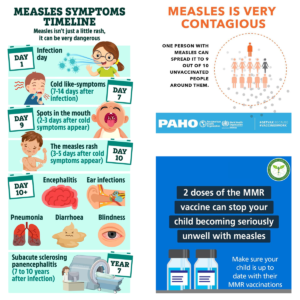
Any further suspected cases will be tested with samples being shipped to the regional reference laboratory at the Caribbean Public Health Agency (CARPHA). Any new cases will be reported to the general public.
Activities are being undertaken to mitigate against further cases of measles including public education through various forms of media, including PSAs, dissemination of information to health care providers, collaboration with regional and international partners, including the UK Health Security Agency (UKHSA), Pan American Health Organisation (PAHO) and CARPHA, as well as other stakeholders.
As part of the response, the Ministry of Health, through the Primary Health Care Department, is conducting a mop-up exercise to identify vulnerable persons, particularly children, who are unvaccinated with the MMR vaccine or who are unsure of their immunisation status.
Measles is a highly infectious disease caused by a virus that spreads easily between people. Symptoms typically start between 10 and 12 days after catching the infection. The signs and symptoms of measles are:
- A high fever
- Runny or blocked nose
- Red, sore, watery eyes
Small greyish-white spots with a bluish-white center inside the mouth, cheek, and throat may appear a few days later. A rash usually appears 2-4 days after the cold-like symptoms start. The rash starts on the face and behind the ears before spreading to the rest of the body.
Measles is spread through close contact with someone with measles. This could be through droplets in the air which are generated by the coughs and sneezes of infected persons or by touching things that someone with measles has coughed or sneezed on.
Measles spreads easily within households and in other places where people mix closely together. Measles is so contagious that if one person has it, up to 90% of the people close to that person who are not immune will also become infected. The period when a person is infectious and can spread the virus is within 7 to 10 days of exposure but can be up to 14 days.
Most measles-related deaths are caused by complications associated with the disease and serious complications are more common in children under the age of 5, or adults over the age of 30 and individuals whose immune systems have been weakened. The most serious complications include blindness, encephalitis (an infection that causes brain swelling), severe diarrhoea and related dehydration, ear infections, or severe respiratory infections such as pneumonia. Women infected while pregnant are also at risk of severe complications, and the pregnancy may end in miscarriage or preterm delivery. People who recover from measles are immune for the rest of their lives.
Any non-immune person (who has not been vaccinated or was vaccinated but did not develop immunity) can become infected.
No specific antiviral treatment exists for measles virus.

A number of measles outbreaks have been detected in a number of countries. While the TCI has high vaccination coverage in the measles, mumps and rubella vaccine (MMR) (>95%), unvaccinated persons can still acquire measles through contact with an infectious person.
Having the MMR vaccine is the best way to prevent measles. The MMR vaccine is safe and effective in providing long term protection against measles, mumps and rubella. Vaccines are offered free of cost to all children at government-operated primary care facilities across the TCI.
The Ministry of Health and Human Services encourages parents to ensure that theirchildren’s vaccines are up to date. If you are unsure if you or your child has had 2 doses of the MMR vaccine, please visit your health care provider. If you have missed a dose, you can still be vaccinated at any age.
The public is being advised to remain vigilant and report any fever with rash or fever followed by rash to their doctor/health care provider as soon as possible.
For additional information please call 649-348-5472 or 649-242-4963 outside of working hours or visit the Ministry of Health and Human Services Facebook page at https://www.facebook.com/tciministryofhealth/ .
Beaches Turks and Caicos- Connecting Lives Through Music

MEDIA RELEASE
PROVIDENCIALES , Turks & Caicos Islands: An appreciation luncheon was recently held to honour the external entertainers who have been offering their services at Beaches Turks and Caicos over the years.

There were expressions of gratitude shared by the administrators of the resort and leaders of the entertainment department. Toasts also flowed in abundance from the entertainers who were being honoured. As they shared how their journey at Beaches began, it became evident that they were all connected either by extending an invitation to another entertainer for a gig, or playing a supportive role, sharing musical equipment or soundtracks. Connections were also made as the more experienced entertainers helped to hone the talent of the incoming artistes. It was beautiful to witness how this network of love for music and their fellow countryfolk has blossomed throughout the years.

Members of the internal entertainment team deemed it a privilege to perform for the guests of honour. The trio of Shanice Maxwell, Emily Merriman and Mariela Rodriguez belted out the classic tune originally sang by Tina Turner, “Simply the Best”. The audience clapped and sang along, signaling their enjoyment of the performance.
Managing Director, James McAnally, could not resist commenting on how apt the song, “Simply the Best” was. He shared, “all of you have given of your best throughout the years and you have helped to bolster our entertainment team and keep our guests entertained. Your dedication is evident, and we want you to know that we appreciate each of you for you are indeed, among the best.”

Songbird of the TCI, Barbara Johnson delivered an emotionally stirring expression of gratitude. She recognised Quinton Dean for his instrumental role in creating the Beaches connection for her. She also thanked Beaches for maintaining their 28-year relationship. “Mr. Quinton Dean was very instrumental in getting me to work here in 1996 when it was Royal Bay at the time. So I am indebted to him for recognising my talent and pushing me forward to come here to perform. Thank you, Beaches Turks and Caicos. There were times when I did not even have a babysitter, but I was allowed to bring my children in a stroller. Up to the point when I started having medical challenges with my legs on the main stage, I was not told to go home. I was told, “we are aware that you are having difficulties but how would you do in a lawn setting?’ I thank you Beaches for recognising that my vocal chords are not in my knees and for keeping me working to provide for myself and my family.”
Noel Browne, vocalist and Jervon Laporte, saxophonist also credits Quinton for having “jumpstarted” their relationship with Beaches. “Quinton has been very supportive throughout the years, and we appreciate that,” stated Jervon.

Garett Bailey, in his new role as entertainment divisions manager of Beaches Turks and Caicos noted, “I have been with the company since 2002 but coming to this resort, I have learnt a lot by observing the operations here and seeing the external entertainers in action. You have impacted the guests and our entertainment team each day. We appreciate what you do, especially from a cultural standpoint. Having witnessed your impact, I was passionate about us meeting in this fashion, where we recognise your efforts and you in turn can feel the love from us, for indeed, we are a family.”
Garett also noted that the event surpassed his expectations as the expressions of love, gratitude, and the connectivity among the entertainers especially, transcended anything he could have planned for.
Each external entertainer had the opportunity to address the audience to express their gratitude or share a fond memory of their work experiences at Beaches. Barbara Johnson echoed the sentiments of all the entertainers when, in directly addressing Garett she shared, “I am grateful, and I feel appreciated today. Persons may see this as a small gesture, but this is huge for us.”
Urgent ACTION Required to Address Lack of Bank Services in South Caicos

#TurksandCaicos, May 31, 2024 – I am deeply committed now more than ever to advocating for the needs and rights of my people of South Caicos and it is with great seriousness that I bring to your attention the dire situation regarding the lack of bank services in my beloved home town.
South Caicos is a vibrant community with hardworking individuals who deserve better. The challenges of unreliable ATM services for far too long, and the recent two-month period without functioning ATMs is an unacceptable situation that demands immediate ACTION. Words and promises are no longer enough.

I am calling on you to prioritize the needs of South Caicos and you must take immediate steps to address this issue.
While you may have been engage in negotiations with relevant persons and banking institutions to explore the possibility of bringing back a new ATM, the delay is LONG overdue.
Our people cannot continue to bear the burden of traveling to neighboring islands or whatever way means to access basic banking services, this is both unreasonable and unjust.
Furthermore, I strongly urge you to ensure the provision of multiple ATMs in South Caicos. Having only one functioning ATM poses significant risks and inconveniences for our community. A backup system must be in place to guarantee uninterrupted access to essential banking services, even in the event of technical difficulties.
Additionally, I would like to draw your attention to the upcoming plans for international flights at the South Caicos airport. As our community prepares for this new development, it is crucial to consider the installation of an ATM at the airport. This will not only cater to the needs of incoming travelers but also provide a convenient banking option for our local residents. We must not allow our community to be left behind, deprived of the basic banking services that are readily available in other neighboring islands. I will continue to advocate tirelessly on behalf of my community until necessary actions are taken. It is your duty as elected officials to ensure the fulfillment of the promises you made.
I kindly request your immediate action. Let us join hand in hand and make South Caicos great.
Hynetta Karen Forbes
PDM Candidate ED3 South Caicos
FIND US ON FACEBOOK

New Date for Bryan Hagerich Sentencing, American charged with 20 bullets

TURKS & CAICOS GOVERNOR’S RESPONSE TO ABC NEWS INTERVIEW

Two American Tourists charged with Ammo Possession will know their fate in SEVEN days

PM Davis: Artificial Intelligence Micro-Course Graduation is ‘something very special’

STATEMENT FROM THE HONOURABLE C. WASHINGTON MISICK, PREMIER TURKS AND CAICOS GOVERNMENT
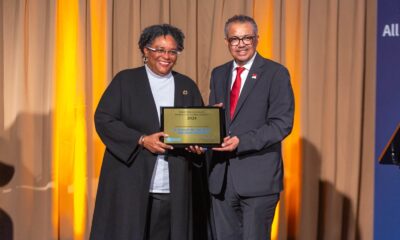
CARICOM is Zone of Peace says Mottley

Turks & Caicos Premier salutes Sandals for country’s economic growth

Provo Water Company Issues an Update on Water Distribution Challenges
Take advantage of the search to browse through the World Heritage Centre information.
Share on social media
Unesco social media, kremlin and red square, moscow.
- Description
Inextricably linked to all the most important historical and political events in Russia since the 13th century, the Kremlin (built between the 14th and 17th centuries by outstanding Russian and foreign architects) was the residence of the Great Prince and also a religious centre. At the foot of its ramparts, on Red Square, St Basil's Basilica is one of the most beautiful Russian Orthodox monuments.
Description is available under license CC-BY-SA IGO 3.0
Le Kremlin et la place Rouge, Moscou
Indissolublement lié à tous les événements historiques et politiques les plus importants survenus en Russie depuis le XIII e siècle, le Kremlin a été construit entre le XIV e et le XVII e siècle par des architectes russes et étrangers exceptionnels. C'était la résidence du grand-prince ainsi qu'un centre religieux. Au pied de ses remparts, sur la place Rouge, s'élève la basilique Basile-le-Bienheureux, l'un des plus beaux monuments de l'art orthodoxe.
الكرملين والساحة الحمراء، موسكو
يرتبط الكرملين ارتباطاً وثيقاً بجميع الأحداث التاريخيّة والسياسيّة المهمّة التي توالت على روسيا منذ القرن الثالث عشر ولقد جرى تشييده بين القرنين الرابع والسابع عشر على يد مهندسين روس وأجانب استثنائيين. وكان الكرملين مقرّ الأمير الكبير كما كان مركزاً دينيّاً. عند أسفل أسواره في الساحة الحمراء شيدت بازيليك القديس بازيل وهي من أروع تحف الفنّ الأرثوذكسي.
source: UNESCO/CPE Description is available under license CC-BY-SA IGO 3.0
莫斯科克里姆林宫和红场
由俄罗斯和外国建筑家于14世纪至17世纪共同修建的克里姆林宫,作为沙皇的住宅和宗教中心,与13世纪以来俄罗斯所有最重要的历史事件和政治事件密不可分。在红场上防御城墙的脚下坐落的圣瓦西里教堂是俄罗斯传统艺术最漂亮的代表作之一。
El kremlin y la Plaza Roja de Moscú
Indisolublemente vinculado a los más trascendentales acontecimientos históricos y políticos de Rusia desde el siglo XIII, el kremlin de Moscú fue construido entre los siglos XIV y XVII por toda una serie de excelentes arquitectos rusos y extranjeros. Además de ser la residencia del Gran Príncipe, fue un importante centro religioso. Al pie de sus murallas, en la Plaza Roja, se alza la basílica de San Basilio el Bienaventurado, uno de los más hermosos monumentos de arte ortodoxo.
モスクワのクレムリンと赤の広場
source: NFUAJ
Kremlin en Rode Plein, Moskou
Het Kremlin is onlosmakelijk verbonden met alle belangrijke historische en politieke gebeurtenissen in Rusland sinds de 13e eeuw. Het werd door de Grote Prins Yuri van Kiev gesticht als residentie en religieus centrum. De bouw vond plaats tussen de 14e en 17e eeuw en het ontwerp was in handen van uitstekende Russische en buitenlandse architecten. Binnen de muren van het Kremlin vindt men een reeks meesterwerken qua architectuur, maar ook beeldende kunst en religieuze monumenten van uitzonderlijke schoonheid. Aan de voet van de stadsmuren, op het Rode Plein, bevindt zich een van de mooiste Russisch-orthodoxe monumenten, de Pokrovkathedraal ook wel Basiliuskathedraal genoemd.
Source: unesco.nl

Outstanding Universal Value
Brief synthesis
At the geographic and historic centre of Moscow, the Moscow Kremlin is the oldest part of the city. First mentioned in the Hypatian Chronicle in 1147 as a fortification erected on the left bank of the Moskva river by Yuri Dolgoruki, Prince of Suzdal, the Kremlin developed and grew with settlements and suburbs which were further surrounded by new fortifications - Kitaigorodsky Wall, Bely Gorod, Zemlyanoy Gorod and others. This determined a radial and circular plan of the centre of Moscow typical of many other Old Russian cities.
In 13th century the Kremlin was the official residence of supreme power - the center of temporal and spiritual life of the state. The Kremlin of the late 15th – early 16th century is one of the major fortifications of Europe (the stone walls and towers of present day were erected in 1485–1516). It contains an ensemble of monuments of outstanding quality.
The most significant churches of the Moscow Kremlin are situated on the Cathedral Square; they are the Cathedral of the Dormition, Church of the Archangel, Church of the Annunciation and the bell tower of Ivan Veliki. Almost all of them were designed by invited Italian architects which is clearly seen in their architectural style. The five-domed Assumption Cathedral (1475–1479) was built by an Italian architect Aristotele Fiorvanti. Its interior is decorated with frescos and a five-tier iconostasis (15th–17th century). The cathedral became the major Russian Orthodox church; a wedding and coronation place for great princes, tsars and emperors as well as the shrine for metropolitans and patriarchs.
In the same square another Italian architect, Alevisio Novi, erected the five-domed Church of the Archangel in 1505-1508. From the 17th to 19th century, its interior was decorated by wonderful frescos and an iconostasis. In this church many great princes and tsars of Moscow are buried. Among them are Ivan I Kalita, Dmitri Donskoi, Ivan III, Ivan IV the Terrible, Mikhail Fedorovich and Alexei Mikhailovich Romanovs.
The Cathedral of the Dormition was built by Pskov architects in 1484–1489. Inside the cathedral some mural paintings of 16th–19th century have been preserved and the icons of Andrei Rublev and Theophanes the Greek are part of the iconostasis.
In 1505-1508 the bell tower of Ivan Veliki was built. Being 82 metres high it was the highest building in Russia which became the focal point of the Kremlin ensemble.
Among the oldest civil buildings of the Moscow Kremlin, the Palace of the Facets (1487–1491) is the most remarkable. Italian architects Marco Fryazin and Pietro Antonio Solario built it as a great hall for holding state ceremonies, celebrations and for receiving foreign ambassadors. The most noteworthy civil construction of the 17th century built by Russian masters is the Teremnoi Palace.
From the early 18th century, when the capital of Russia moved to St. Petersburg, the Kremlin mainly played a ceremonial role with religious functions. By the end of the century the architectural complex of the Kremlin expanded with the Arsenal reconstructed after the Fire of 1797 by Matvei Kazakov. The Senate was built in 1776–1787 according to the plans of the same architect as the home of the highest agency of State power of the Russian Empire - the Ruling Senate. Today it is the residence of the President of Russia.
From 1839 to 1849 a Russian architect K.A. Thon erected the Great Kremlin Palace as a residence of the imperial family which combined ancient Kremlin buildings such as the Palace of the Facets, the Tsarina’s Golden Chamber, Master Chambers, the Teremnoi Palace and the Teremnoi churches. In the Armory Chamber built by K.A. Thon within the complex of the Great Kremlin Palace, there is a 16th century museum officially established by the order of Alexander I in 1806.
Red Square, closely associated with the Kremlin, lies beneath its east wall. At its south end is the famous Pokrovski Cathedral (Cathedral of St Basil the Blessed), one of the most beautiful monuments of Old Russian church architecture, erected in 1555–1560 to commemorate the victory of Ivan the Terrible over the Kazan Khanate. In the 17th century the cathedral gained its up-to-date appearance thanks to the decorative finishing of the domes and painting both inside and outside the cathedral. The construction of Red Square was finished by the late 19th century together with the erection of the Imperial Historic Museum (today the State Historical Museum), the Upper Trading Rows (GUM) and the Middle Trading Rows. In 1929, , Lenin’s Mausoleum, designed by A.V. Shchusev and an outstanding example of the Soviet monumental architecture, was finished.
Criterion (i) : The Kremlin contains within its walls a unique series of masterpieces of architecture and the plastic arts. There are religious monuments of exceptional beauty such as the Church of the Annunciation, the Cathedral of the Dormition, the Church of the Archangel and the bell tower of Ivan Veliki; there are palaces such as the Great Palace of the Kremlin, which comprises within its walls the Church of the Nativity of the Virgin and the Teremnoi Palace. On Red Square is Saint Basil the Blessed, still a major edifice of Russian Orthodox art.
Criterion (ii) : Throughout its history, Russian architecture has clearly been affected many times by influences emanating from the Kremlin. A particular example was the Italian Renaissance. The influence of the style was clearly felt when Rudolfo Aristotele Fioravanti built the Cathedral of the Dormition (1475-79) and grew stronger with the construction of the Granovitaya Palace (Hall of the Facets, 1487-91) by Marco Fryazin and Pietro Antonio Solario. Italian Renaissance also influenced the towers of the fortified enceinte, built during the same period by Solario, using principles established by Milanese engineers (the Nikolskaya and the Spasskaya Towers both date from 1491). The Renaissance expression was even more present in the classic capitals and shells of the Church of the Archangel, reconstructed from 1505 to 1509 by Alevisio Novi.
Criterion (iv) : With its triangular enceinte pierced by four gates and reinforced with 20 towers, the Moscow Kremlin preserves the memory of the wooden fortifications erected by Yuri Dolgoruki around 1156 on the hill at the confluence of the Moskova and Neglinnaya rivers (the Alexander Garden now covers the latter). By its layout and its history of transformations (in the 14th century Dimitri Donskoi had an enceinte of logs built, then the first stone wall), the Moscow Kremlin is the prototype of a Kremlin - the citadel at the centre of Old Russian towns such as Pskov, Tula, Kazan or Smolensk.
Criterion (vi) : From the 13th century to the founding of St Petersburg, the Moscow Kremlin was directly and tangibly associated with every major event in Russian history. A 200-year period of obscurity ended in 1918 when it became the seat of government again. The Mausoleum of Lenin on Red Square is the Soviet Union’s prime example of symbolic monumental architecture. To proclaim the universal significance of the Russian revolution, the funerary urns of heroes of the revolution were incorporated into the Kremlin’s walls between the Nikolskaya and Spasskaya towers. The site thus combines in an exceptional manner the preserved vestiges of bygone days with present-day signs of one of the greatest events in modern history.
From the date of including the Moscow Kremlin and Red Square on the World Heritage List all the components representing the Outstanding Universal Value of the property are within its boundaries. The territory and the integrity of the World Heritage property have also remained unchanged. Within its boundaries the property still comprises all the elements that it contained at the date of nomination. The biggest threat, however, is unregulated commercial development of the adjacent areas.
Authenticity
The history of the Moscow Kremlin and Red Square is reflected in the archival documents of 12th–19th century, for example in medieval chronicles, cadastral surveys, estimated construction books, painted lists, inventories, foreign notes and in graphic matters such as manuscripts, chronicles, plans, drafts, engravings, lithographs, sketches of foreign travelers, paintings and photographs. These documents are exceptionally valuable information sources. Comparison of the data received from archival documents and those obtained in the process of field study gives the idea of authenticity of the property and its different elements. This comparison also serves as the basis for project development and for the choice of the appropriate methods of restoration that may preserve the monuments’ authenticity.
On the border of the ensemble a number of monuments destroyed in the 1930s were reconstructed according to measured plans.
Protection and management requirements
The statutory and institutional framework of an effective protection, management and improvement of the World Heritage property “Kremlin and Red Square, Moscow” has been established by laws and regulations of the Russian Federation and the city of Moscow.
According to the decree of the President of RSFSR of 18 December 1991 № 294, the Moscow Kremlin was included among especially protected cultural properties of nations of Russia - the highest conservation status for cultural and historical monuments in Russian legislation.
“Kremlin and Red Square, Moscow” is a Cultural Heritage Site of federal importance. State protection and management of federal sites is provided by Federal Law of 25.06.2002 № 73-FZ “On cultural heritage sites (historical and cultural monuments) of nations of the Russian Federation”. The federal executive body responsible for protection of the cultural property is the Department for Control, Supervision and Licensing in the Cultural Heritage Sphere of the Ministry of Culture of the Russian Federation.It is in charge of all methodological and control functions concerning restoration, usage and support of cultural heritage sites and the territories connected.
The World Heritage property is situated in the urban environment of Moscow. The city policy regarding cultural heritage protection and town-planning regulation is the responsibility of Moscow City Government, represented by the Department of Cultural Heritage, the Department of Urban Development and the Committee for Urban Development and Architecture of Moscow. In 1997 the boundaries of the protective (buffer) zone were approved in order to preserve the property, and to maintain and restore the historical architectural environment as well as the integral visual perception of the property.. There is a need to ensure the creation of an appropriate buffer zone and to develop close liaison between all stakeholders, including the Moscow City authorities, to ensure that constructions around the property do not impact adversely on its Outstanding Universal Value.
The World Heritage property is used by the following organizations: FGBUK (Federal Government Budgetary Institution of Culture), the State Historical and Cultural Museum-preserve “The Moscow Kremlin”, the Administrative Department of the President of the Russian Federation, the Federal Guard Service of the Russian Federation and OJSC “GUM Department Store”.
- Official site of 'The Moscow Kremlin' State Historical and Cultural Museum and Heritage Site
- Moscow Kremlin Museums Telegram Group (in Russian only)
- Moscow Kremlin Museums VKontakte Page (in Russian only)
- Moscow Kremlin Museums Dzen Page (in Russian only)
- State Historical Museum VKontakte Group (in Russian only)
- Msk Guide Page (in Russian only)
- Official site of the State Department Store
- State Historical Museum (in Russian only)

The Nomination files produced by the States Parties are published by the World Heritage Centre at its website and/or in working documents in order to ensure transparency, access to information and to facilitate the preparations of comparative analysis by other nominating States Parties.
The sole responsibility for the content of each Nomination file lies with the State Party concerned. The publication of the Nomination file does not imply the expression of any opinion whatsoever of the World Heritage Committee or of the Secretariat of UNESCO concerning the history or legal status of any country, territory, city or area or of its boundaries.
State of Conservation (SOC)
- Share full article
Advertisement
Supported by
Does P-22, the Celebrity Big Cat of Los Angeles, Have a Successor?
More than a year after the death of P-22, the beloved mountain lion who made Griffith Park his home, another has been spotted nearby.

By Livia Albeck-Ripka
Reporting from Los Angeles
For months, Los Angeles residents believed the park had been vacated. Only the memory of P-22, the beloved celebrity mountain lion who had once made it his home, lingered as the city mourned his death .
That was until this month, when an apparent successor — another mountain lion, seemingly bigger, younger and stronger — emerged late one night.
“It’s very mystical,” said Vladimir Polumiskov, who captured footage of the big cat near his apartment complex, which borders Griffith Park, a sprawling urban reserve north of downtown Los Angeles. “They called P-22 the Brad Pitt of the Hollywood Hills,” he said. “This is going to be the puma DiCaprio.”
Mr. Polumiskov, 30, saw the “huge cat” around 9 p.m. on May 14, he said, just as he was returning home from dinner with his wife and their 2-year-old son.
He said he had just parked and was unbuckling his son from his seat when he noticed the creature standing just feet away from his car. He gingerly placed his son back into his seat, got back in the car, and closed all the doors — all while the animal stared at him. “I was shocked at how big he was,” he said. “This guy is just beautiful.”

Safely back in the car, Mr. Polumiskov was able to take photos, and noticed that the cat did not appear to have been tagged or collared by researchers. “How did this cat cross four huge freeways that are always busy 24 hours a day without being noticed?” he said.
Beth Pratt, the California executive director for the National Wildlife Federation, said that researchers were shocked to learn that another mountain lion appeared to have taken up residence in the park so soon.
Mountain lions, Ms. Pratt said, are solitary creatures, and males tend to dominate an area of around 150 square miles each. But as the Los Angeles region has become increasingly urbanized, space for the cats has diminished. “I think what this shows is these mountain lions really don’t have any other option,” she said.
P-22, known for lurking beneath the Hollywood sign (and most likely having crossed two major freeways to get there), was euthanized in December 2022 after he grew old and agitated . He was widely beloved in the city and had come to represent a surprising symbiosis between the concrete-filled landscape and the wild creatures that have found a way to make their home in its surrounds. Mountain lions are generally calm, quiet and elusive, and attacks on people are rare, according to the National Park Service .
In 2021, partially inspired by P-22, California officials said they would build the world’s largest wildlife crossing across Highway 101 to reconnect critical habitats. It is due to be completed by 2026, officials said this month.
Researchers are now working on capturing the new unnamed cat, so they can test its DNA to figure out where it came from and collar it with a tracker. They are also relying on public sightings and footage. Mountain lions are named by number, and researchers are now up to 120, making it likely that the new Griffith Park resident could be named P-122.
“If he captures this cat soon, he’ll skip 121” and go with P-122 to pay homage to P-22, Ms. Pratt said of the researcher charged with trapping the cat. “I think we’ve got him mostly talked into it.”
For now, Los Angeles residents are enchanted by Mr. Polumiskov’s footage of the unnamed cat , which received outpourings of love and excitement after being uploaded to social media . “A NEW KING TAKES THE THRONE!” one person wrote. Another said the news had made her “all choked up and emotional.”
Ms. Pratt said that the new puma made it clear that P-22’s legacy would live on. “Not only do we know how to live with mountain lions, we want to,” she said, noting that in many other states, big cats in urban parks would probably be removed.
“Here,” she added, “we want wildlife among us, even with the risks.”
Livia Albeck-Ripka is a Times reporter based in Los Angeles, covering breaking news, California and other subjects. More about Livia Albeck-Ripka

IMAGES
COMMENTS
Essay on World Nature Conservation Day in 200 words. The world we live in is blessed with a plethora of natural flora and fauna. With the intervention of human lives, our natural processes get ...
July 28, 2024. World Nature Conservation Day is an annual event held on July 28. This day stresses the need for preserving a healthy environment and natural resources to maintain a stable and healthy society. Saving plants and animals that face the threat of extinction is one of the primary goals of World Nature Conservation Day.
Conservation of nature means the preservation of forests, land, water bodies, and minerals, fuels, natural gases, etc. And to make sure that all these continue to be available in abundance. Thus all these natural resources make life worth living on Earth. Life would not be imaginable without air, water, sunlight as well as other natural ...
Similar Environmental Days on the National Day Calendar: Every year on July 28th, World Nature Conservation Day acknowledges that the foundation for a healthy society is a healthy environment. It's also a day to increase awareness about the importance of protecting our natural resources.
World Nature Conservation Day Essay 10 Lines (100 - 150 Words) 1) 28 th of July is observed as World Nature Conservation Day all over the world. 2) This day highlights the importance of nature and its conservation. 3) This day also sheds light on threatened species of plants and animals. 4) On this day, many events are organized by ...
Short Essay On World Nature Conservation Day. World Nature Conservation Day is celebrated on July 28th every year and is dedicated to promoting the importance of conserving our natural resources and preserving biodiversity. The day was established by the United Nations General Assembly in 1982 to raise awareness about the need to protect the ...
World Wildlife Day is an opportunity to celebrate the many beautiful and varied forms of wild fauna and flora and to raise awareness of the multitude of benefits that conservation provides to people.
Essay 2: Conservation of Nature. 'In every walk in nature, one receives far more than he seeks.'. Nature is the best surprise gift received from God. Nature has blessed us with a variety of things like water, food, shelter, rain, sunlight, oxygen, and countless other things. These things assist humans in the betterment of their lives.
India News Edited by NDTV Newsdesk Updated: July 27, 2021 7:04 pm IST. World Nature Conservation Day Images: It is celebrated on July 28 annually. (File) World Nature Conservation Day acknowledges ...
In 1980, the group proposed a world conservation strategy. Many governments have used the IUCN model to develop their own conservation plans. In addition, the IUCN monitors the status of endangered ... Thirsty Food People require about 2 to 4 liters of drinking water each day. However, a day's worth of food requires 2,000 to 5,000 liters of ...
The Convention seeks to address all threats to biodiversity and ecosystem services. In 2000, the UN General Assembly officially proclaimed May 22 to be the International Day for Biodiversity (IDB). The date was chosen to celebrate the adoption of the initial text of the CBD, on May 22, 1992. Thanks to its efforts, the Convention has ...
Also Read: World Water Day. Essay on Water Conservation in 100 Words. Water is crucial for all components of life which makes it a necessary resource for day-to-day activities. We use water for domestic activities like cooking, bathing, drinking, washing, etc. So, ultimately the consumption of water is very high. This makes it necessary to ...
The establishment of World Environment Day was a response to the surging need to address global environmental issues like global warming, ozone layer depletion, melting of glaciers, etc. The first World Environment Day was observed on 5th June 1973. In this year, the theme was "Only One Earth". Keeping up with this practice, each year a ...
In December 2022, the world came together and agreed on a global plan to transform our relationship with nature. The adoption of the Kunming-Montreal Global Biodiversity Framework, also known as ...
Furthermore, the world environment day is run by the United Nations Environment Programme (UNEP). Since the year 1973. Above all the main purpose of celebrating this day was to spread awareness. The awareness was about the conservation of our environment. Moreover to also take various preventive measures to avert the effects of Global warming.
World Environment Day aims to inspire more people than ever before to take action to prevent the growing strain on planet Earth's natural systems from reaching the breaking point.
500 Words Energy Conservation Essay. Energy conservation refers to the efforts made to reduce the consumption of energy. The energy on Earth is not in unlimited supply. Furthermore, energy can take plenty of time to regenerate. This certainly makes it essential to conserve energy.
Many of Russia's wild lands form part of a network of strictly protected scientific nature reserves called Zapovedniks (Zap-o-VED-nik), the highest category of nature conservation in the world (IUCN category I). The first Zapovednik, Barguzinsky, was created in 1916 on the eastern shore of Lake Baikal. Now, 101 Zapovedniks, covering more than ...
Factsheet on WWF's Protected Areas for a Living Planet Altai-Sayan Ecoregion Project, which aims to help governments from the ecoregion achieve the 2012/2012 targets of the CBD Programme of Work on Protected Areas - an historic commitment by 190 governments to create a global network of comprehensive, well-managed, and representative terrestrial and marine protected areas.
Proclamation of the International Day for the Conservation of the Mangrove Ecosystem. The International Day for the Conservation of the Mangrove Ecosystem, adopted by the General Conference of UNESCO in 2015 and celebrated each year on 26 July, aims to raise awareness of the importance of mangrove ecosystems as "a unique, special and vulnerable ...
The Levada Center, an independent pollster, found that 84 percent of Russians are worried about environmental problems; of those, 25 percent expressed highest concern over air pollution, 15 percent over water pollution, and 11 percent over waste management. This growth in environmental awareness in Russia has coincided with a growing concern ...
The theme of this year's World Ocean Day on June 8 is "Catalyzing Action for our Ocean and Climate." Earth's climate and the ocean are inextricably linked, and the health of each depends on the other. Throughout the month of June, young people across the globe are working together to advocate for a healthy ocean.
University of Delaware alumna Juliahna Mistretta is leveraging her landscape architecture degree for conservation. This summer, Mistretta will complete a master's degree in global biodiversity conservation at the University of Sussex in Brighton, United Kingdom. As part of an effort to record the park's biodiversity, Mistretta collected and identified bats and beetles in Africa's Kasanka ...
Providenciales, 30 May 2024 — Saturday, the 8 th of June marks World Oceans Day 2024, a global celebration dedicated to honoring, protecting, and conserving our world's oceans. This year's theme, "Planet Ocean: Tides are Changing," emphasizes the urgent need for collective action to address the challenges facing our oceans and highlights innovative solutions to preserve marine ...
The Kremlin of the late 15th - early 16th century is one of the major fortifications of Europe (the stone walls and towers of present day were erected in 1485-1516). It contains an ensemble of monuments of outstanding quality. The most significant churches of the Moscow Kremlin are situated on the Cathedral Square; they are the Cathedral of ...
World Environment Day 2024: The theme of World Environment Day 2024 is 'land restoration, desertification, and drought resilience'. World Environment Day is celebrated to raise awareness and promote environmental conservation. It is supported by several non-governmental organisations, companies, and government bodies and serves as the major United Nations environmental outreach day.
Last updated on: 31 May 2024 | 00:00 am (IST) World No Tobacco Day 2024: Theme, Significance And Best Products To Cease Smoking. May 31, 2024. World No Tobacco Day is a global health event observed annually on May 31st, to inculcate awareness among the population about the harmful impacts of tobacco and safeguard the health of the community.
In 2021, partially inspired by P-22, California officials said they would build the world's largest wildlife crossing across Highway 101 to reconnect critical habitats. It is due to be completed ...
By Bruce Ritchie. 05/28/2023 07:00 AM EDT. TALLAHASSEE, Fla. — When Ron DeSantis first ran for governor in 2018, waves of red tide, dead fish and even manatee carcasses were washing up on ...